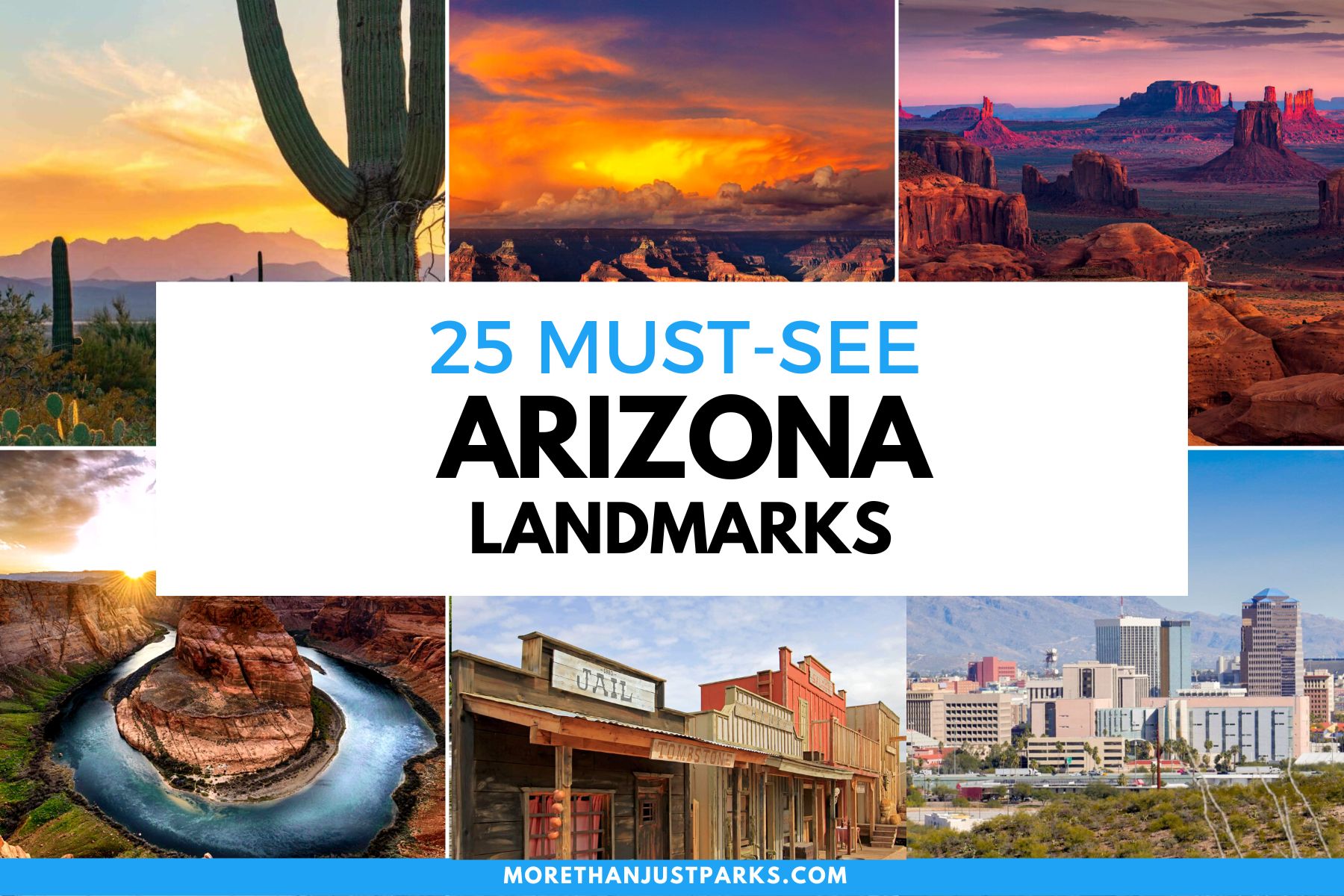
Article Summary: Arizona Landmarks
Arizona Landmarks. More Than Just Parks has 25 incredible must-see sites for you to visit.
There’s so much more to this exciting place than Sun Devil Stadium. In this article, we’ll familiarize you with the incredible landmarks located in the Grand Canyon State.
We’ve got incredible places, iconic memorials, fascinating museums, epic monuments and so much more.
We’re going to give you our list of the Top 25 Landmarks In Arizona.
So, What Is A Landmark?
Well, it’s a place of “a special character or special historical or aesthetic interest or value as part of the development, heritage, or cultural characteristics of a city, state, or nation.”
Why visit these places? Because landmarks connect us to the past. Through visiting these wonderful places where history occurred we find our roots. It allows us to feel like we are a part of something much bigger than ourselves.
And, speaking of history, did I mention that I taught the subject? I spent a lifetime teaching about the history behind many of these amazing sites. Then I got to see them firsthand. And now I’m sharing the fascinating stories of these places with you. It doesn’t get any better than that!
So, without further ado, let’s dive in.
Table Of Contents
Table of Contents: Arizona Landmarks
Arizona Landmarks
Some Fascinating Facts About Arizona
Here are some fascinating facts about Arizona:
- Arizona is a state located in the southwestern region of the United States.
- The capital and largest city of Arizona is Phoenix.
- Arizona is known for its deserts, canyons, and mountains, and is home to a number of national parks and monuments, including the Grand Canyon, Petrified Forest National Park, and Saguaro National Park.
- Arizona was the last of the contiguous states to join the Union, becoming the 48th state on February 14, 1912.
- The state bird of Arizona is the cactus wren, and the state flower is the saguaro blossom.
- The University of Arizona, located in Tucson, is the state’s flagship university and is a member of the prestigious Association of American Universities.
- Arizona has a diverse economy, with major industries including tourism, aerospace and defense, and electronics manufacturing.
- The state is home to a number of Native American tribes, including the Navajo Nation, which is the largest Native American reservation in the United States.
- The state motto of Arizona is “Ditat Deus,” which means “God enriches.”
- Famous people from Arizona include former U.S. Senator and presidential candidate John McCain, former Supreme Court Justice Sandra Day O’Connor, and musician Alice Cooper.
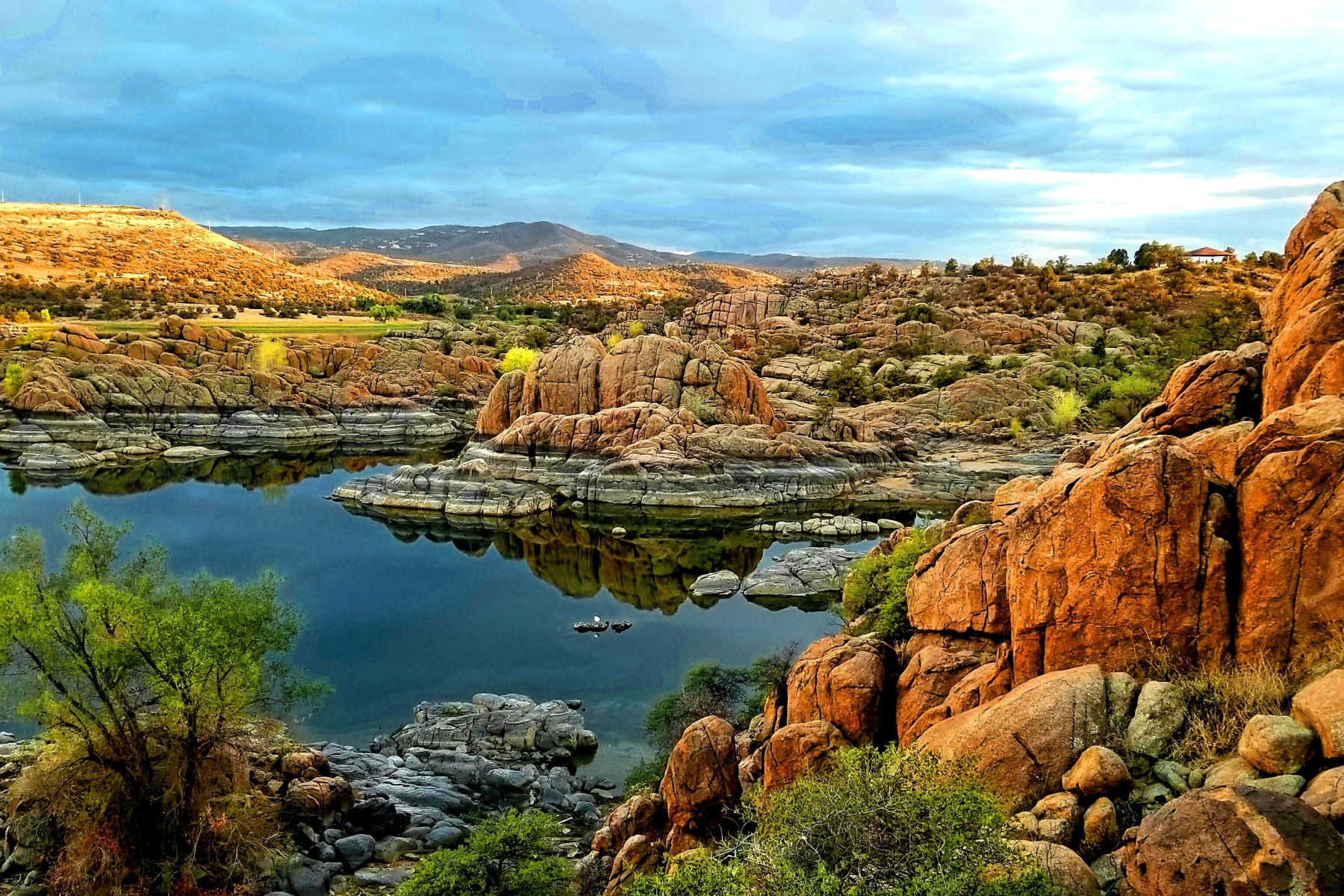
We’re Excited To Share Our List Of Arizona Landmarks With YOU
Arizona’s beautiful landscape makes it a popular year-round tourist destination. The beauty of the outdoors, the warm weather and the breathtaking sunsets make it hard to resist.
The Grand Canyon State also has some amazing landmarks. More Than Just Parks is excited to share our list of the Top 25 Arizona Landmarks with you.
And we’re kicking it off at #25 with the Arizona Museum of Natural History.
Top 25 Arizona Landmarks
25. Arizona Museum of Natural History
The Arizona Museum of Natural History is a museum located in Mesa, Arizona, that focuses on natural history and anthropology. The museum features exhibits and collections that explore the natural and cultural history of the American Southwest.
One of the main attractions of the museum is its dinosaur exhibits, which include life-size replicas of dinosaurs and other prehistoric creatures. Visitors can also explore exhibits on Arizona’s geological history, including displays on volcanoes, earthquakes, and the Grand Canyon.
The museum also features exhibits on the cultural history of the Southwest, including displays on the Native American peoples of the region, as well as exhibits on the Spanish colonial period and the Wild West era.
In addition to its exhibits, the Arizona Museum of Natural History also hosts a variety of events and educational programs, including lectures, workshops, and hands-on activities for children and adults. Visitors can also browse the museum store, which sells a variety of natural history-themed gifts and souvenirs.

24. Yuma Territorial Prison State Historic Park
Our next Arizona landmark is a place where visitors can walk through the actual strap iron cells and solitary chamber of Arizona Territory’s first prison. Now a museum, the prison houses photographs and colorful exhibits of those who once “involuntarily” stayed there and the harsh life they had to endure.
At #24 on our list of the Best Arizona Landmarks is the Yuma Territorial Prison State Historic Park.
The Yuma Territorial Prison State Historic Park preserves and interprets the history of the Yuma Territorial Prison. The prison was in operation from 1876 to 1909 and housed a variety of inmates, including notorious outlaws such as “Buckskin” Frank Leslie and “Three-Fingered Jack” Dunlap.
Today, visitors to the Yuma Territorial Prison State Historic Park can explore the prison’s cells, guard towers, and other historic structures. Exhibits and interpretive displays throughout the site provide information on the history of the prison and the lives of its inmates.
In addition to the prison itself, the Yuma Territorial Prison State Historic Park also features a museum with exhibits on the history of Yuma and the surrounding region. The museum’s collections include artifacts and photographs related to the prison, as well as exhibits on local Native American cultures, the Colorado River, and the agricultural history of the region.
The park also offers a variety of educational programs and special events throughout the year, including guided tours, living history demonstrations, and a popular annual “Ghosts of the Yuma Territorial Prison” event.
Visitors can also enjoy picnic areas, a gift shop, and scenic views of the Colorado River and the surrounding desert landscape.
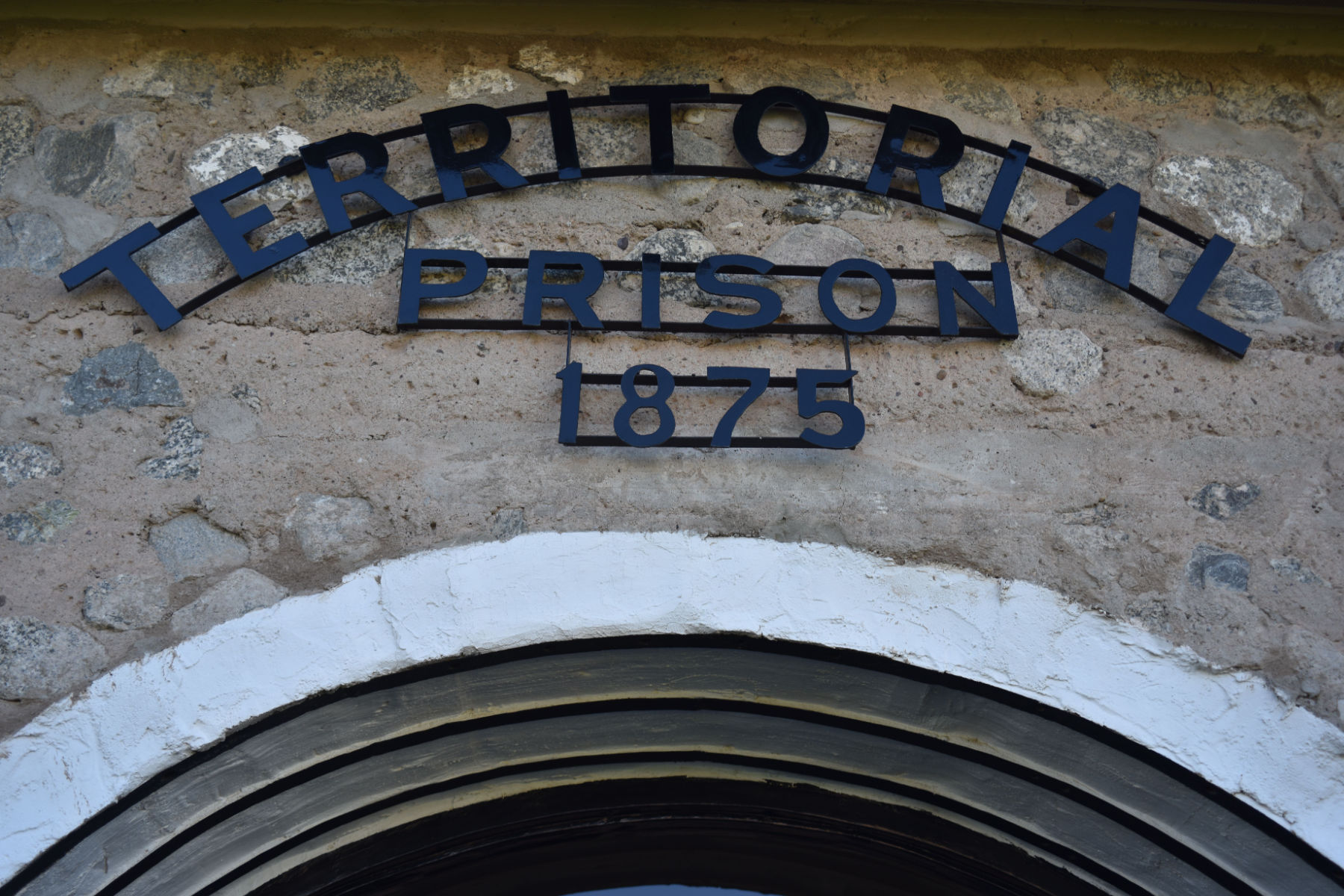
23. London Bridge
Our next Arizona landmark has quite a story to tell. In 1968, an American tycoon bought London Bridge—all 10,000 tons of it—and moved it brick-by-brick to the desert town of Lake Havasu City, Arizona.
At #23 on our list of the Best Arizona Landmarks is London Bridge.
The history of London Bridge in Arizona began in the 1960s when the City of London decided to replace the 19th-century London Bridge with a new one. Rather than simply demolishing the old bridge, London officials decided to sell it to an American entrepreneur named Robert P. McCulloch.
McCulloch, who had made his fortune in the chainsaw business, saw an opportunity to use the London Bridge as a centerpiece for a new planned community he was developing on the shores of Lake Havasu in Arizona. In 1968, he purchased the bridge for $2.46 million and oversaw its disassembly, transport, and reconstruction in Lake Havasu City.
The reconstruction of the London Bridge in Arizona was a massive undertaking that involved numbering and labeling each of the bridge’s 10,246 stones for reassembly in the United States. The reconstruction process took three years and involved the use of cranes, barges, and other heavy equipment.
When the reconstructed London Bridge was completed in 1971, it became a popular tourist attraction and symbol of the growing community of Lake Havasu City. Today, the bridge is the second-largest tourist attraction in Arizona, drawing over a million visitors each year.
The London Bridge in Arizona is a unique example of how a historic landmark can be preserved and re-purposed in a new setting. It serves as a reminder of the shared history and cultural connections between the United States and the United Kingdom.
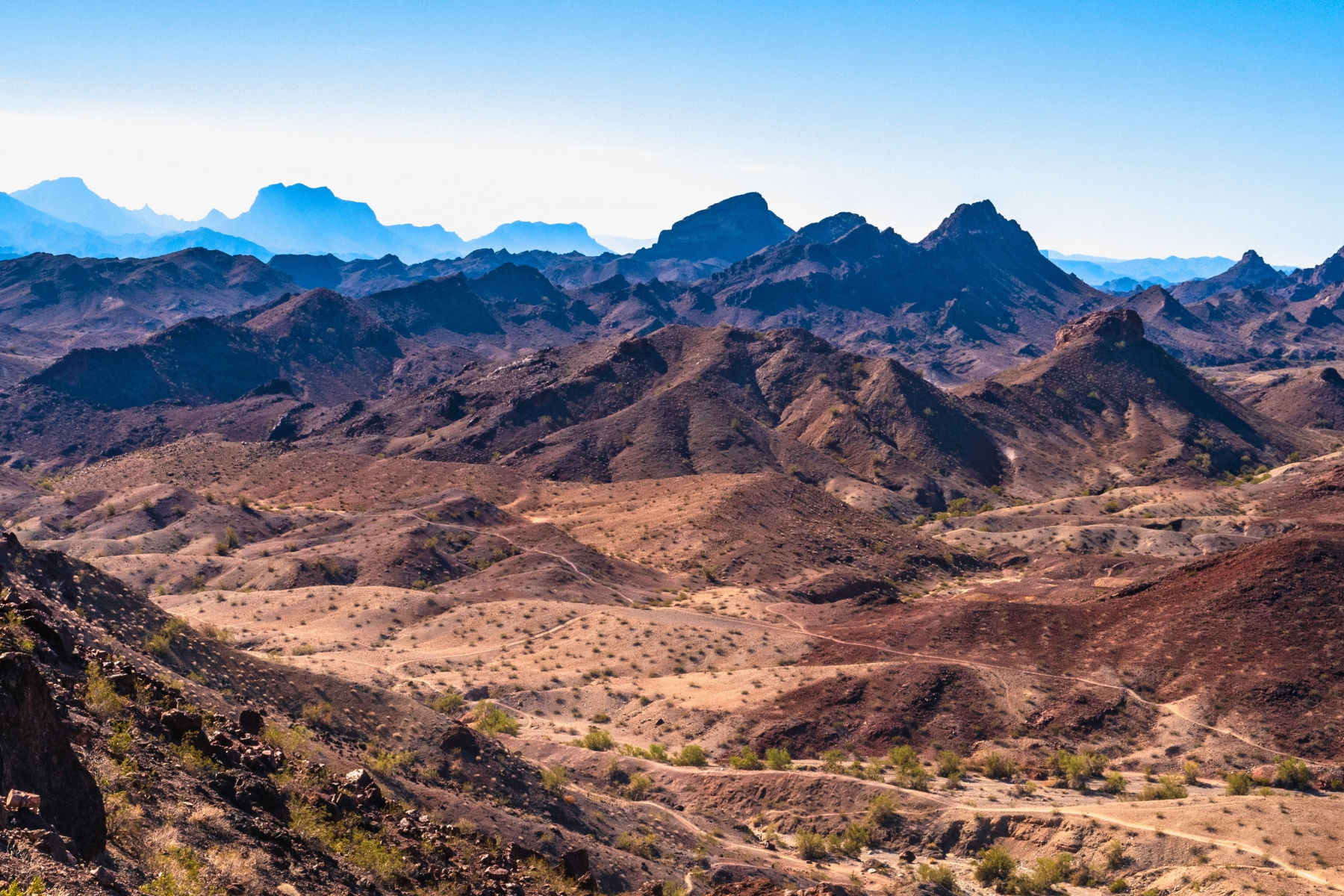
22. Old Town Scottsdale
Our next Arizona landmark has always been among the most vibrant and unique urban downtown centers in the American Southwest. Its pedestrian-friendly streets are home to world class art galleries, museums, restaurants and retail shops.
At #23 on our list of the Best Arizona Landmarks is Old Town Scottsdale.
Old Town Scottsdale has its roots in the early 20th century. Originally a small farming and ranching community, Scottsdale began to develop as a tourist destination in the 1920s, when wealthy Easterners and Midwesterners began to visit the area for its warm climate and natural beauty.
By the 1930s, Scottsdale had become a popular winter resort town, attracting visitors from around the country. In the 1950s and 1960s, a number of artists and writers also began to settle in the area, drawn by its rugged desert landscape and relaxed, bohemian vibe.
During this period, Old Town Scottsdale emerged as a cultural and commercial center, with a mix of shops, galleries, restaurants, and bars. The district’s distinctive architecture, which features Spanish colonial-style buildings and adobe walls, has been carefully preserved and restored over the years, giving Old Town Scottsdale a charming and nostalgic feel.
Today, Old Town Scottsdale is a bustling tourist destination, with a wide range of attractions and activities for visitors. In addition to its historic buildings and cultural landmarks, the district is home to a number of popular events and festivals throughout the year, including: the Scottsdale ArtWalk, the Scottsdale Arabian Horse Show, and the Scottsdale Culinary Festival.
Old Town Scottsdale continues to be an important cultural and economic center for the city of Scottsdale and a popular destination for visitors from around the world.
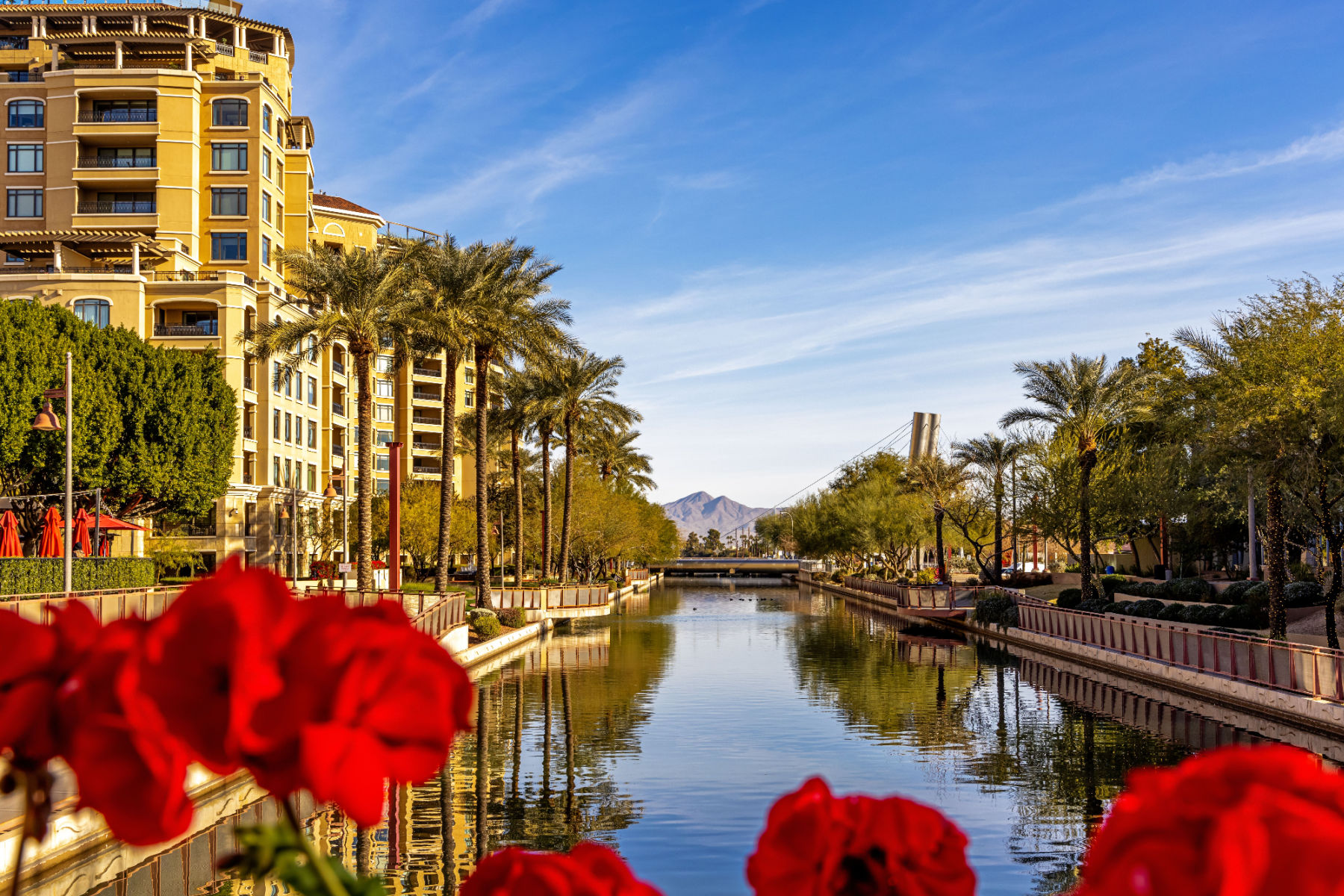
21. Copper Queen Mine
Our next Arizona landmark is one of the greatest copper camps in the world. It also produced such precious metals as gold, silver, zinc and lead — valued at $6.1 billion some 50 years ago.
At #21 on our list of the Best Arizona Landmarks is the Copper Queen Mine.
The Copper Queen Mine is located in Bisbee, Arizona, and is one of the most significant mining operations in American history. Here is a brief overview of its history:
The mine was discovered in the late 1870s by a U.S. Army scout named Jack Dunn, who stumbled upon a vein of copper while tracking Apache Indians through the Mule Mountains.
In 1880, a group of investors led by Colonel William C. Greene bought the rights to the mine and established the Copper Queen Consolidated Mining Company.
Under Greene’s leadership, the Copper Queen Mine rapidly expanded and became one of the largest copper mines in the world. By the turn of the century, Bisbee had become a bustling mining town with a population of over 20,000 people.
The Mine’s Success Was Due To New Technologies
The mine’s success was due in part to the introduction of new technologies, such as steam-powered hoists and electric generators. In the early 1900s, the mine also began using a revolutionary mining method called block caving, which allowed miners to extract copper ore more efficiently and safely.
The Copper Queen Mine continued to operate throughout the 20th century, even as the demand for copper fluctuated. However, by the 1970s, the mine’s reserves were dwindling, and it became less profitable to operate. In 1975, the mine was closed for good.
Today, the Copper Queen Mine is a tourist attraction, and visitors can take guided tours through the old mining tunnels and see the equipment and tools that were used to extract copper from the earth.
The town of Bisbee has also become a popular destination for artists and history enthusiasts, with many of the old mine buildings and homes having been converted into galleries, shops, and museums.

Top 20 Arizona Landmarks
20. Scottsdale’s Museum of the West
We’re on to the Top 20 Arizona Landmarks. At #20 is Scottsdale’s Museum of the West.
Scottsdale’s Museum of the West focuses on the history and culture of the American West. The museum was established in 2015, and it features a wide range of exhibits, artifacts, and educational programs related to the history, art, and culture of the American West.
The museum’s collection includes a wide range of artifacts and objects related to the American West, including Native American art and artifacts, cowboy gear, firearms, and other items related to the history of the American West.
The museum also features a variety of temporary and rotating exhibits that highlight different aspects of the American West, such as art, history, and culture.
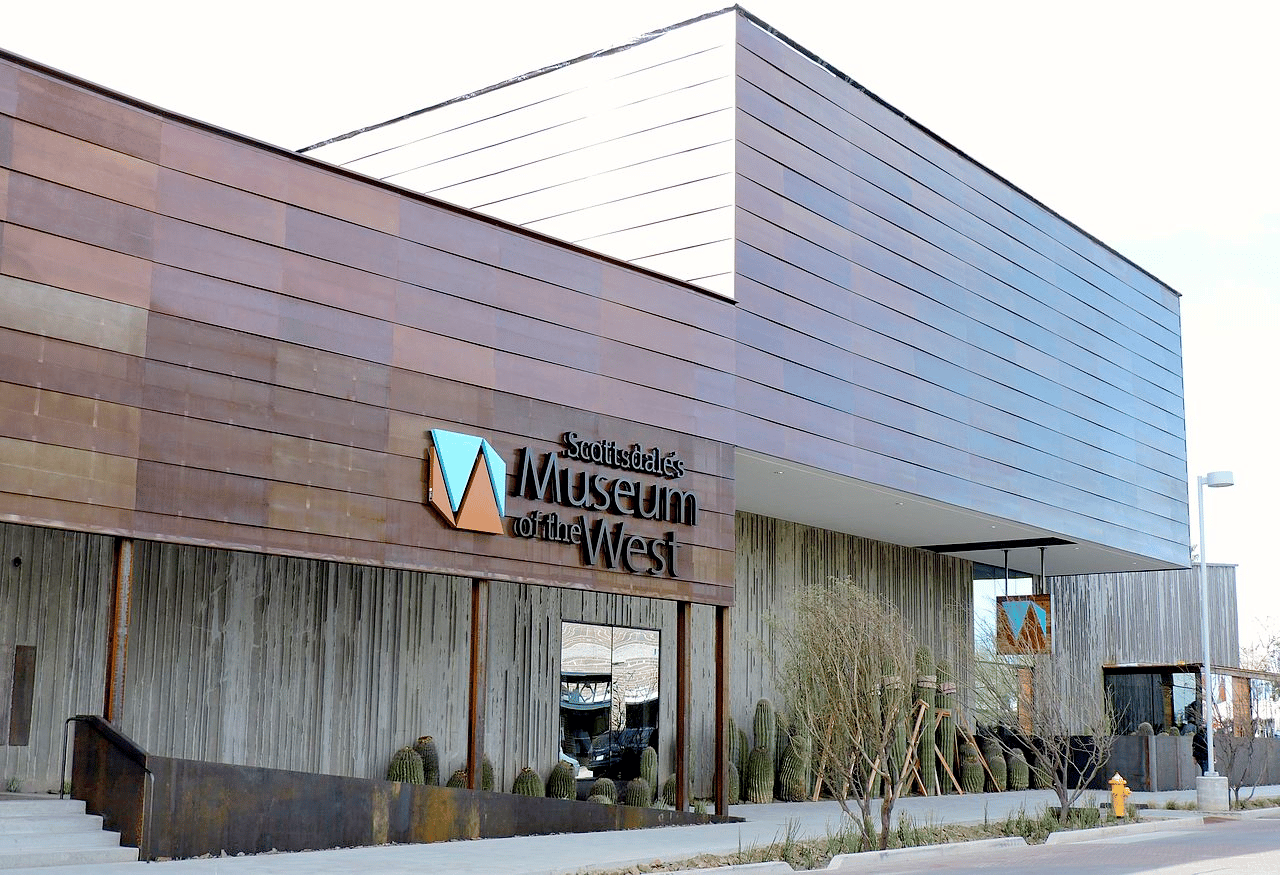
Famous Artists Of The American West
One of the museum’s main focus is on the art of the American West, showcasing paintings, sculptures, and other works by some of the most famous artists of the American West, such as Frederic Remington and Charles M. Russell.
The Museum also include artifacts from the first people of the West, including pottery, jewelry and other objects.
The museum also offers a variety of educational programs and events, such as lectures, tours, and workshops, which provide visitors with an in-depth understanding of the history, art, and culture of the American West.
The museum is open to the public and is a popular destination for history buffs, art enthusiasts, and those interested in the American West.
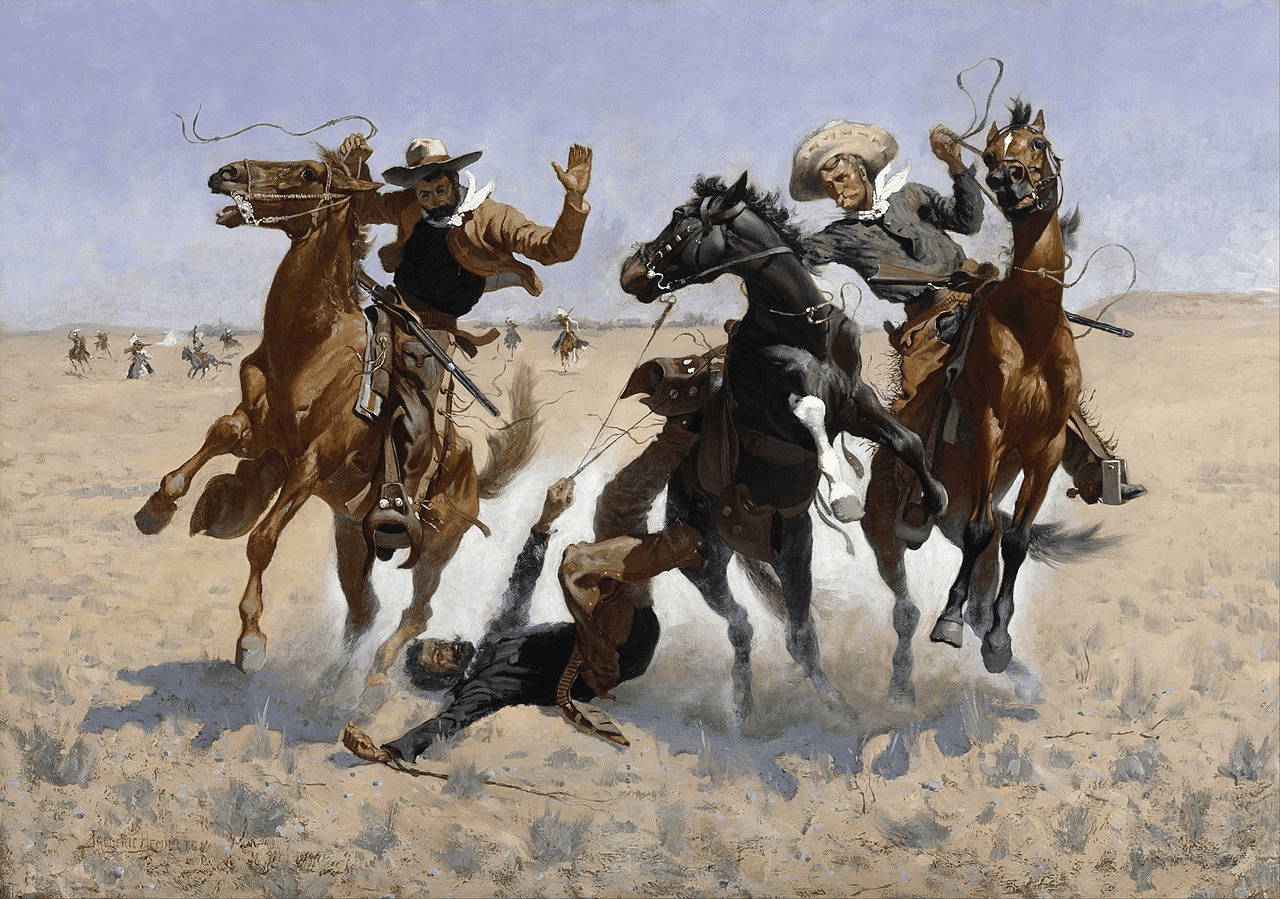
19. San Xavier del Bac Mission
Our next Arizona landmark is a place where Jesuits first introduced the Tohono O’odham, a Piman-speaking group, to domesticated horses and cattle.
The Spanish also brought European crops, like wheat. Missionaries transformed the lives of semi-nomadic Native Americans with animal husbandry and permanent, rather than seasonal, settlement.
At #19 on our list of the Best Arizona Landmarks is San Xavier del Bac Mission.
San Xavier del Bac is located in the Sonoran Desert, about 10 miles south of Tucson, Arizona. The mission was founded in 1692 by Father Eusebio Kino, a Jesuit missionary who traveled throughout the region to establish missions and spread Christianity.
The original mission building was made of mud and wood, and was destroyed by Apache attacks in the early 18th century. It was rebuilt in 1783 by Franciscan missionaries, who used brick and stone to create a more permanent structure. The current mission building, which is still standing today, was completed in 1797.
The design of San Xavier del Bac is a unique blend of Spanish, Moorish, and Native American architectural styles, reflecting the diverse cultures of the region. The mission is known for its intricate decorations, including colorful frescoes and sculptures that depict scenes from the Bible and the lives of the saints.

Jesuit Missionary Eusebio Francisco Kino, Drawing by Francis O’Brian, 1962 | Courtesy of NPS
It Served As A Center For Religious & Cultural Life
Throughout its history, San Xavier del Bac has served as a center for religious and cultural life in the region. It was an important stop for travelers and traders along the Camino Real, a network of trade routes that linked Mexico City with Santa Fe, New Mexico. The mission also provided education and healthcare services to the local community.
In the 19th century, the mission was temporarily abandoned during the Mexican-American War and the subsequent Gadsden Purchase, which transferred the land to the United States.
The mission was later restored in the 20th century, thanks in part to the efforts of a group of Franciscan friars who worked to preserve the building and its historic artifacts.
Today, San Xavier del Bac is a popular tourist destination and a functioning parish church. It remains an important symbol of the region’s rich history and cultural heritage, and continues to be a source of inspiration and spirituality for the people of Southern Arizona.
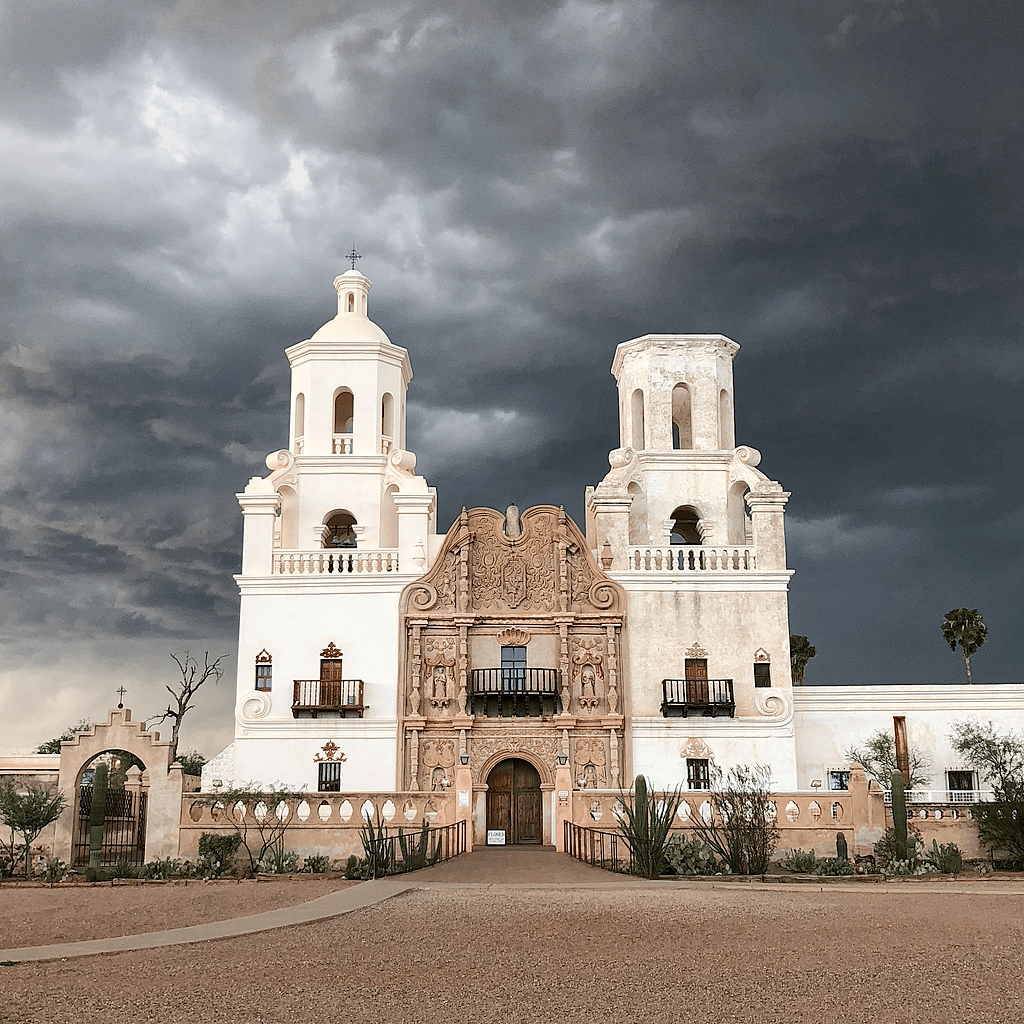
18. Pioneer Living History Museum
If you enjoy learning about the history of the American West then Arizona is one of the best places to visit. And our next landmark is a case in point. At #18 on our list of the Best Arizona Landmarks is the Pioneer Living History Museum.
The Pioneer Living History Museum is an outdoor museum in Arizona that aims to preserve and showcase the history of the American frontier. The museum features a collection of authentic pioneer and western buildings, including homes, a schoolhouse, a church, a blacksmith shop, and a jail.
Visitors can explore these structures and learn about the daily lives of pioneers through interactive exhibits, artifacts, and period-specific demonstrations. The museum also has a collection of vintage vehicles, farm equipment, and other tools and machines used by pioneers.
The museum also has living history programs, where costumed interpreters reenact the daily life of pioneers, giving visitors an opportunity to experience what life was like in the past.
It also has special events and activities throughout the year, such as blacksmithing and pottery workshops, cowboy skills demonstrations, and old-fashioned games and crafts.
The museum is a great destination for families, school groups, and history buffs interested in learning about the American frontier and the pioneering spirit.
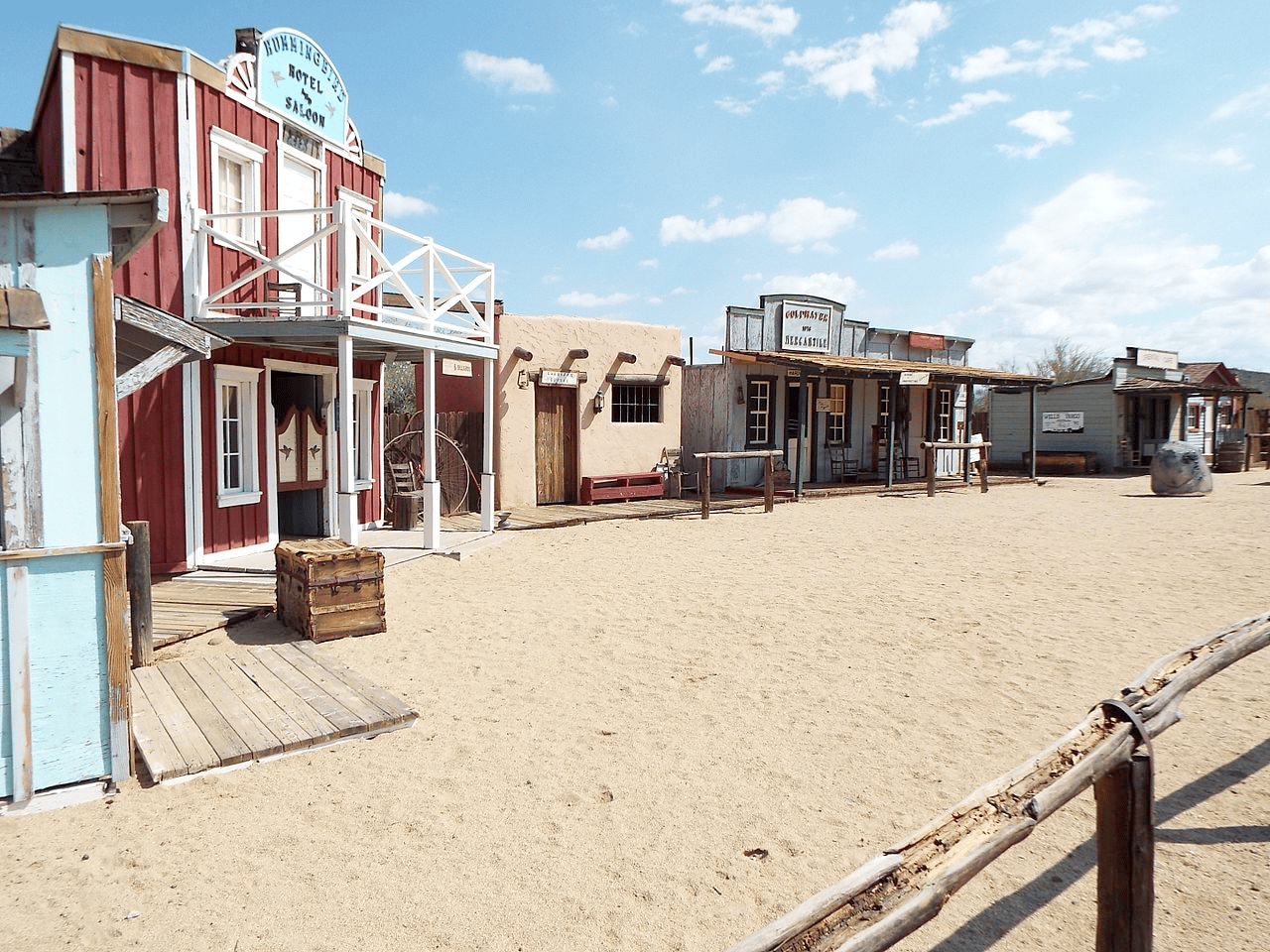
17. Tombstone Historical District
Our next Arizona landmark is significant for its association with the struggle between lawlessness and civility in frontier towns of the wild west. At #17 on our list of the Best Arizona Landmarks is the Tombstone Historical District.
Tombstone Historical District is located in the town of Tombstone, Arizona. The district is known for being the site of the famous Gunfight at the O.K. Corral.
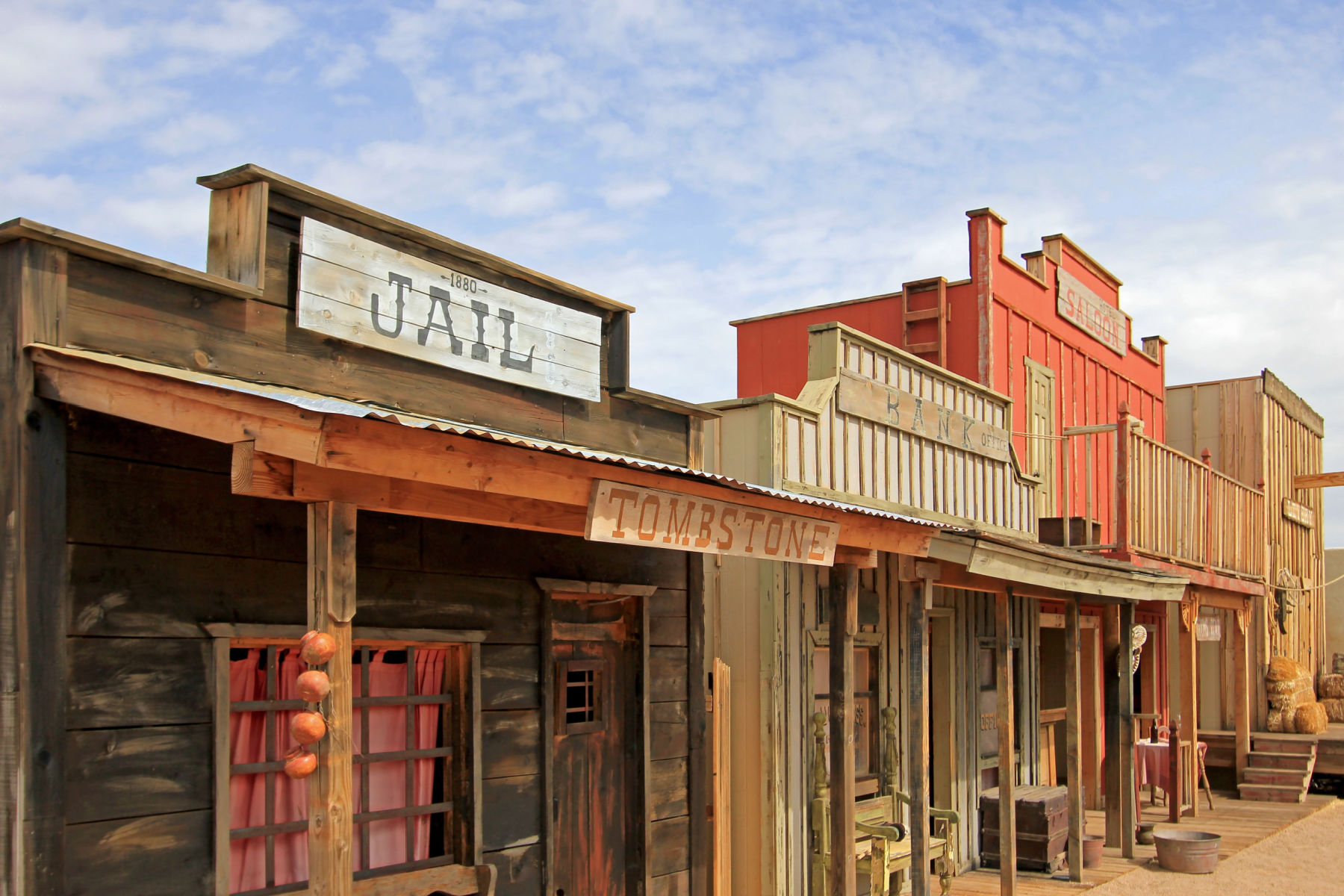
Gunfight At The O.K. Corral
The Gunfight at the O.K. Corral was a legendary shootout that took place on October 26, 1881. The incident involved a confrontation between lawmen and a group of outlaws who were suspected of stealing and committing other crimes in the area.
The lawmen involved in the shootout were Wyatt Earp, his brothers Virgil and Morgan Earp, and their friend Doc Holliday. The outlaws were a group known as the Cowboys, which included Ike and Billy Clanton, Tom and Frank McLaury, and Billy Claiborne.
The shootout took place in a narrow alley near the O.K. Corral, a local saloon and gambling hall. According to some accounts, the Earps and Holliday confronted the Cowboys and demanded that they surrender their weapons. The outlaws refused, and a gunfight ensued.
The shootout lasted only about 30 seconds and involved several exchanges of gunfire. When it was over, three members of the Cowboys were dead (Ike and Billy Clanton, and Tom McLaury) and two of the Earps (Morgan and Virgil) were wounded. Doc Holliday was also grazed by a bullet.
The Gunfight at the O.K. Corral became a legendary event in American history. It has been the subject of numerous books, movies, and other works of popular culture.
The incident has been portrayed in various ways over the years, with some accounts portraying the Earps and Holliday as heroic lawmen, while others have depicted them as ruthless vigilantes.
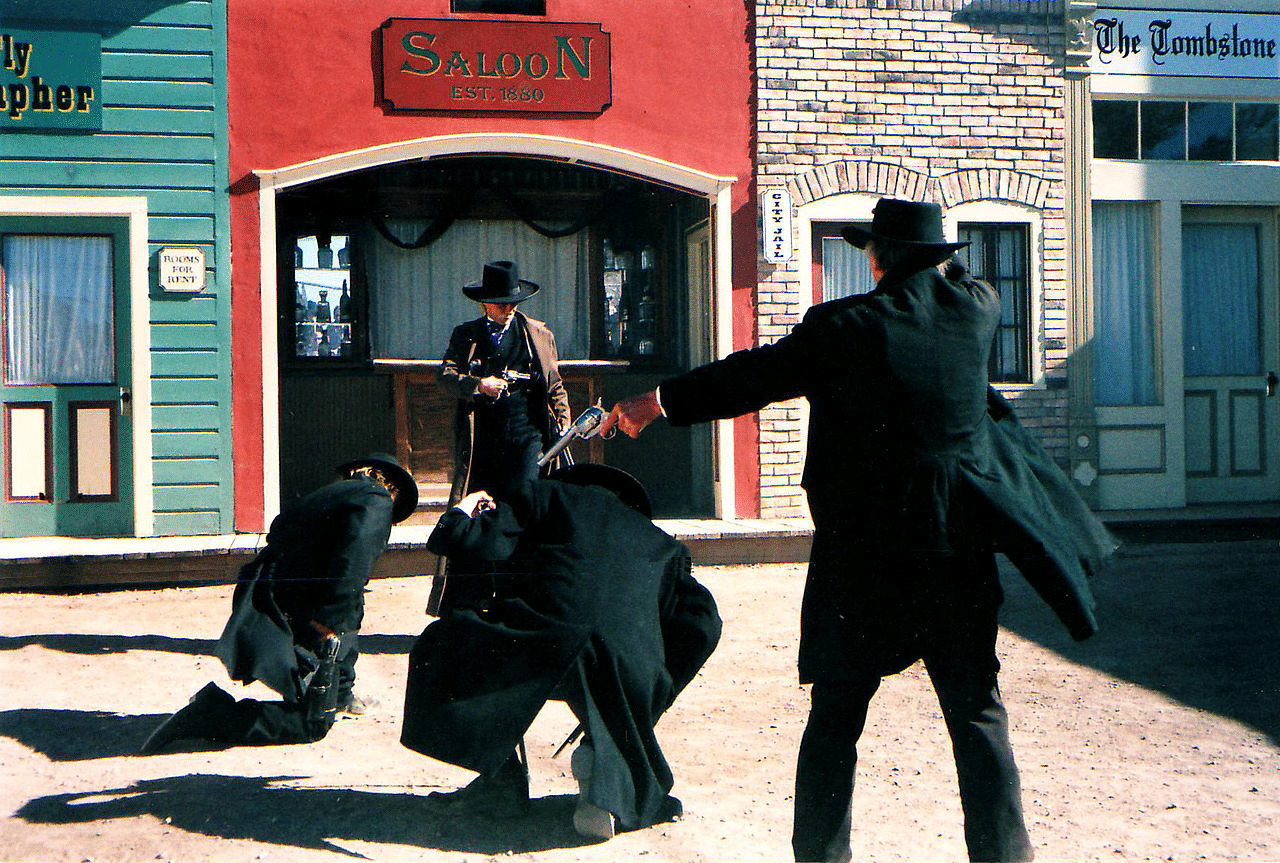
See The Place Where It All Happened
The district includes a number of buildings and sites that are associated with the history of the town and the gunfight, including the O.K. Corral itself, as well as the courthouse, the Bird Cage theater, and several other buildings and sites.
The district is also home to several museums and exhibits that highlight the history of the town, including the Tombstone Epitaph Museum, which is dedicated to the history of the newspaper that was published in Tombstone during the late 19th century.
Tombstone Historical District is a popular tourist destination. It’s a great place to learn about the history of the American West and the Wild West era.
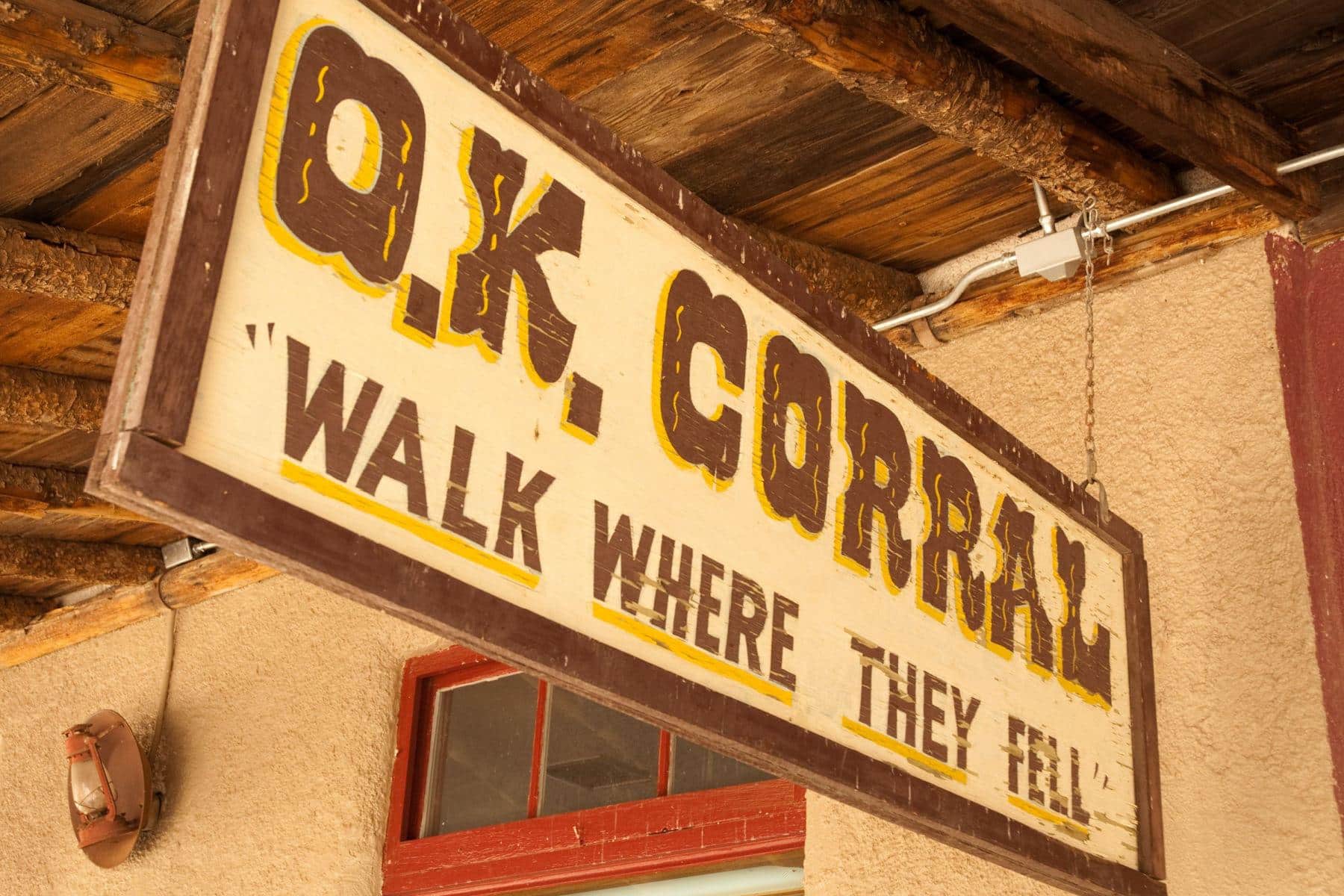
16. Wupatki National Monument
Our next Arizona landmark is the largest free-standing pueblo structure in Northern Arizona. Nine hundred years ago, it was the largest trading center for 50 miles. In fact, it protects over 2,600 ancestral Puebloan sites 20 miles north of Sunset Crater Volcano National Monument.
At #16 on our list of the Best Arizona Landmarks is Wupatki National Monument.
Wupatki National Monument is a Native American heritage that contains ancient ruins of the Sinagua people, a pre-Columbian civilization who lived in the area from about 500 AD to 1250 AD.
The main feature of the monument is Wupatki Pueblo, a large multi-story masonry building with rooms, plazas, and ball courts.
The monument also contains several other smaller pueblos and dwellings scattered throughout the landscape, as well as petroglyphs and pictographs created by the Sinagua people.
Wupatki National Monument provides insights into the lives and culture of the Sinagua people and the unique ecological and geological features of the surrounding area.
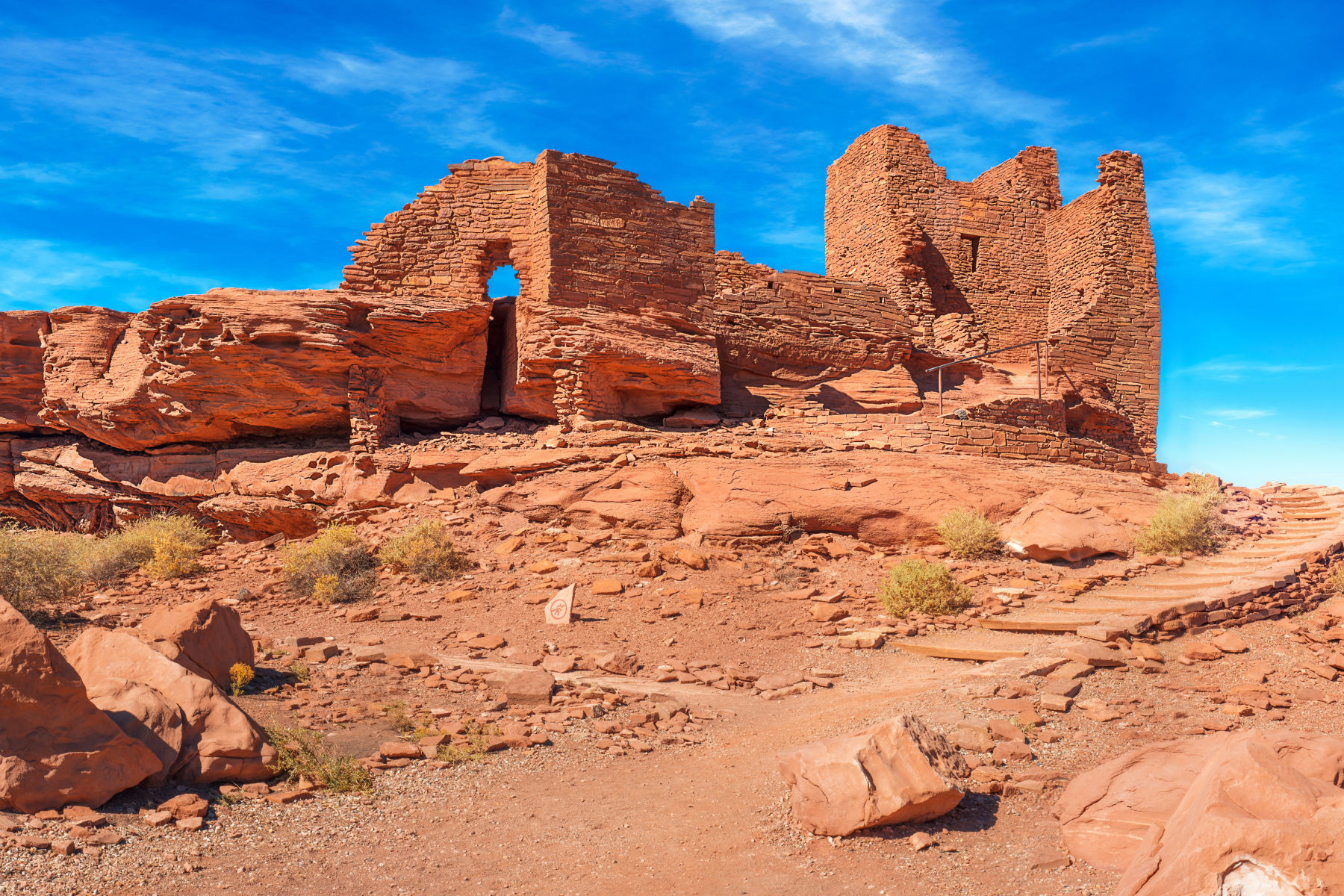
Top 15 Arizona Landmarks
15. Hubbell Trading Post National Historic Site Monument
We’re on to out Top 15 Arizona Landmarks. Our next landmark is the oldest continuously operating trading post in the American Southwest. It remains a thriving place that has served Ganado, selling goods and American Indian art, since 1878.
At #15 on our list of the Best Arizona Landmarks is the Hubbell Trading Post National Historic Site Monument.
The site was established in 1878 by John Lorenzo Hubbell, a trader of Hispanic and European descent. It played a significant role in the economic and cultural history of the Navajo people.
The trading post served as a center for trading goods and livestock between the Navajo people and Anglo-American traders. The post also served as a cultural center where Navajo people gathered to trade, share stories and news, and socialize.
The main building of the trading post, which was built in 1883, still stands today and serves as a museum.
The museum exhibits the trading post’s history, the life of the Navajo people, and the history of the trading post’s owners.
See A Collection Of Traditional Navajo Items
The exhibits include a collection of Navajo rugs, baskets, jewelry, and other traditional crafts, as well as photographs, documents, and other historical artifacts.
The site also features a reconstructed Navajo hogan, a traditional Navajo home, and a visitor center with a bookstore and information about the site’s history and the Navajo Nation.
The Hubbell Trading Post National Historic Site is a unique destination that offers visitors a glimpse into the history and culture of the Navajo people and the American West.
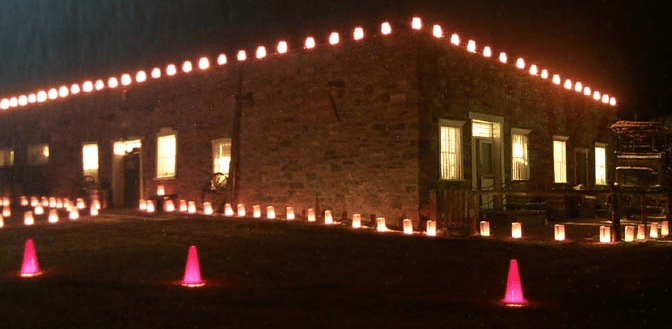
14. Tumacácori National Historical Park
Our next Arizona landmarks preserves the history and tells the stories of the Spanish missions and their influence on the American Indian communities of the Pimería Álta and on the continuing culture of the American southwest.
At #14 on our list of the Best Arizona Landmarks is Tumacácori National Historical Park.
The mission was one of several built in the region to convert the indigenous people to Catholicism and establish Spanish control over the area. The mission was active until the mid-1800s, after which it fell into disrepair.
In the late 1800s, the site was acquired by the United States government. It became Tumacácori National Monument, which was later redesignated as a National Historical Park.
Today, visitors to the park can explore the ruins of the mission church, convento, and other buildings, as well as learn about the history of Spanish colonial missions and the impact they had on indigenous communities in the American Southwest.
Here Are Some Things To Do At Tumacácori National Historical Park
Visitors enter Tumacácori National Historical Park through the Tumacácori Visitor Center. The visitor center offers a 15 minute video, an excellent museum, and a bookstore.
A self-guided interpretive tour booklet, “In the Footprints of the Past,” is available for loan or purchase in the bookstore.
Guided tours are available at 11:00 and 2:00 January through March, and may be available at other times and seasons. Special tours, such as guided walks to the Santa Cruz River, may also be available.
13. Tonto National Monument
Now if you’re someone who has never experienced a cliff dwelling then you’re in for a real treat because visitors to our next site will have have the opportunity to marvel at two Salado-style cliff dwellings.
At #13 on our list of the Best Arizona Landmarks is Tonto National Monument.
You can see colorful pottery, woven cotton cloth, and other artifacts tell a story of people living and using resources from the northern Sonoran Desert from 1250 to 1450 CE.
Tonto was established in 1907. It’s mission is to protect several cliff dwelling sites and numerous smaller archeological sites scattered throughout the highlands and alluvial plains within the Tonto Basin, Arizona.

Here Are Some Things To Do At Tonto National Monument
- Explore the cliff dwellings: The highlight of Tonto National Monument is the ancient cliff dwellings that are open to the public. These structures were built by the Salado people in the 13th century and offer a fascinating glimpse into the past.
- Hike the trails: Tonto National Monument has several hiking trails that lead visitors through the Sonoran Desert landscape. The Lower Cliff Dwelling Trail is a 1.5-mile round-trip hike that takes you to the main cliff dwelling, while the Upper Cliff Dwelling Trail is a more strenuous 3-mile round-trip hike that offers stunning views of the surrounding mountains.
- Attend a ranger-led program: Tonto National Monument offers a variety of ranger-led programs, including guided hikes, talks, and demonstrations. These programs are a great way to learn more about the history and ecology of the area.
- Birdwatching: Tonto National Monument is home to a variety of bird species, including Gambel’s quail, Gila woodpeckers, and cactus wrens. Bring your binoculars and see how many you can spot.
- Picnic: Tonto National Monument has a picnic area where you can enjoy a meal surrounded by the beautiful Sonoran Desert scenery.
- Photography: The dramatic cliff dwellings, towering saguaros, and rugged mountains make Tonto National Monument a photographer’s paradise. Bring your camera and capture some amazing shots.
- Camping: Tonto National Monument has a small campground that is open from October through April. Reservations are required, but it’s a great way to experience the park after the day visitors have left.
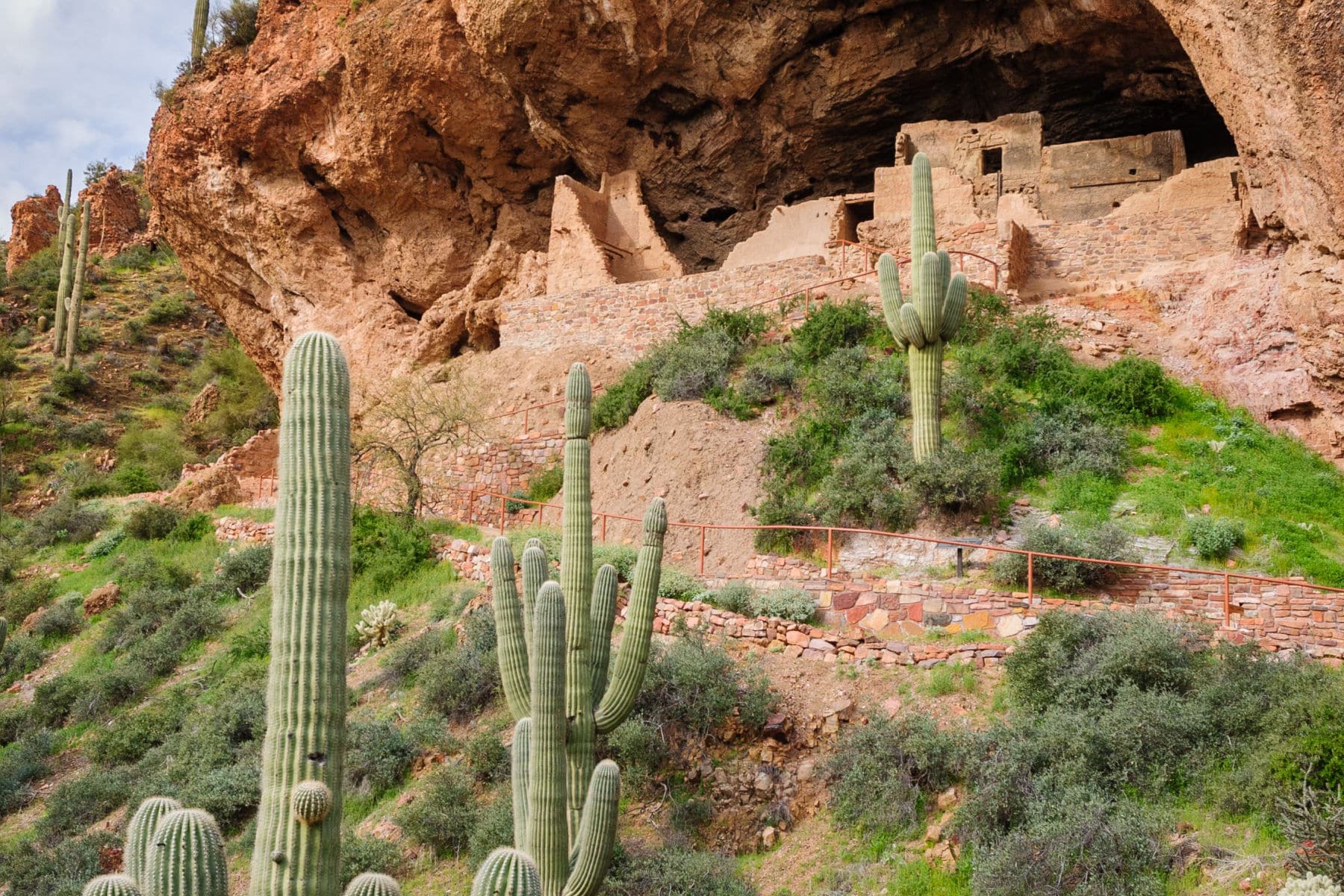
12. Sonoran Desert
Our next Arizona landmarks is a subtropical desert and the most complex desert in North America. It has great diversity in geological structures as well as the number and variety of plants and animals.
At #12 on our list of the Best Arizona Landmarks is the Sonoran Desert.
The Sonoran Desert is a vast, arid region located primarily in the southwestern United States, including parts of Arizona, California, and Mexico. In Arizona, the Sonoran Desert covers over 100,000 square miles and is known for its distinctive landscape and unique flora and fauna.
The Sonoran Desert in Arizona is characterized by its hot, dry climate and sparse vegetation. The average annual rainfall in the region is only 3-15 inches, and temperatures can reach over 100 degrees Fahrenheit in the summer months.
Despite these harsh conditions, the Sonoran Desert is home to a diverse array of plant and animal species, many of which are adapted to the extreme climate.
Check Out The Saguaro Cactus
One of the most recognizable features of the Sonoran Desert in Arizona is the saguaro cactus, which can grow up to 40 feet tall and live for over 150 years. Other common plant species in the region include: ocotillo, creosote bush, and palo verde trees.
The desert is also home to a variety of wildlife, including coyotes, bobcats, rattlesnakes, and several species of birds and reptiles.
Human habitation in the Sonoran Desert dates back thousands of years, and indigenous peoples have long relied on the region’s natural resources for food, shelter, and medicine.
Today, the Sonoran Desert is a popular destination for outdoor recreation, including hiking, camping, and wildlife viewing.
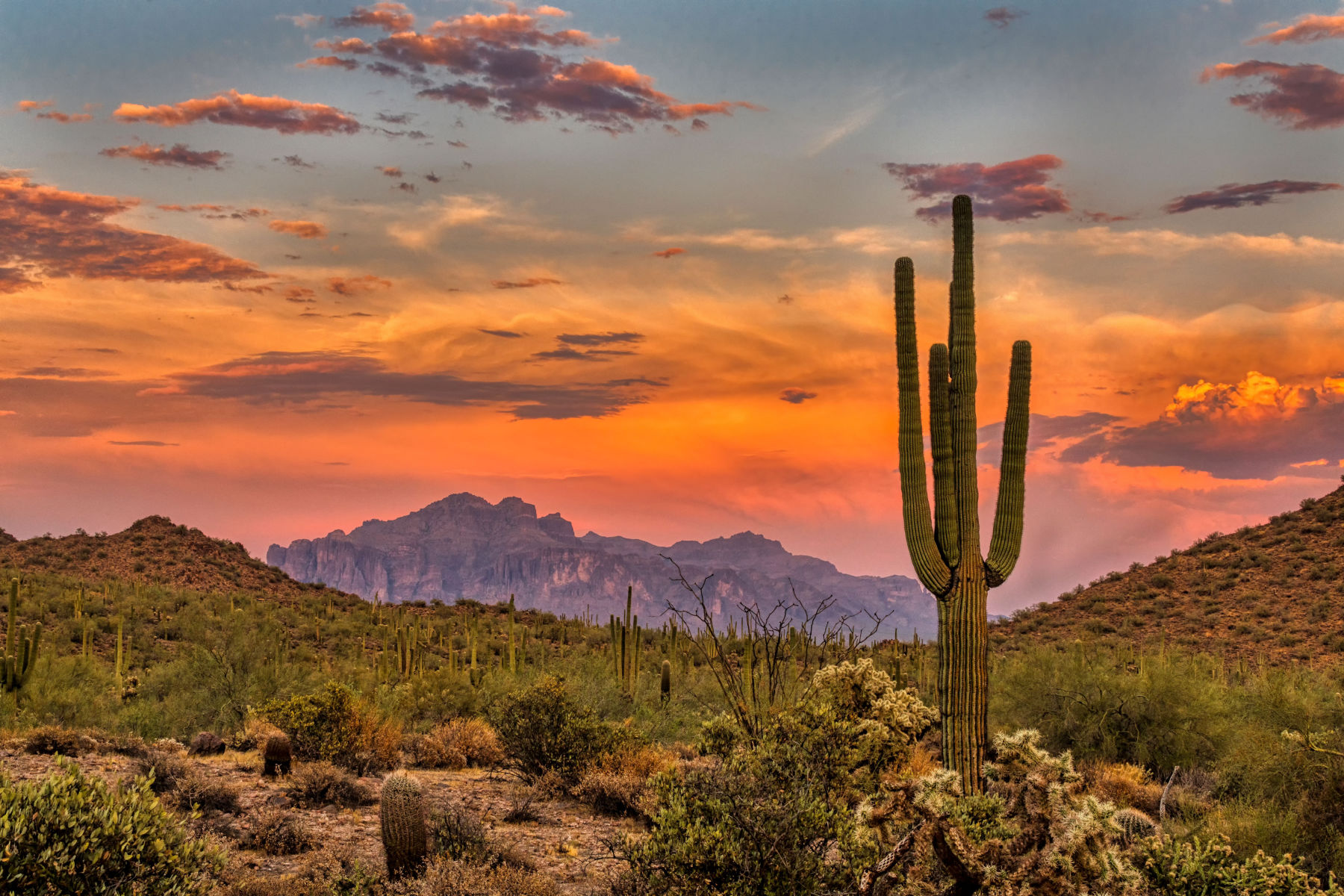
11. The Phoenix Art Museum
Our next Arizona landmark is considered the largest art museum in the southwestern United States. It’s home to a collection of more than 20,000 objects which engage more than 300,000 guests, lifelong learners, and art lovers each year.
At #11 on our list of the Best Arizona Landmarks is The Phoenix Art Museum.
The museum’s collection is diverse and includes works of art from various time periods and cultures. Some of the highlights of the collection include American and European paintings from the 19th and 20th centuries, as well as contemporary art, photography, and fashion design.
The museum also features significant collections of Asian, Latin American, and Western American art.
The Museum Was Designed By Alden B. Dow
The museum’s building is a modernist structure designed by the architect Alden B. Dow and features more than 200,000 square feet of exhibition space. The museum also features a sculpture garden, a restaurant, and a gift shop.
In addition to its permanent collection, the Phoenix Art Museum also hosts a variety of temporary exhibitions throughout the year. These exhibitions range from retrospectives of major artists to thematic group exhibitions and are often accompanied by educational programs and events.
The museum is open to the public six days a week and offers a variety of admission options, including free admission on Wednesday afternoons and reduced admission for students and seniors.
The Phoenix Art Museum is widely regarded as one of the premier cultural institutions in the southwestern United States and attracts visitors from around the world.

The Top 10 Arizona Landmarks
10. Old Spanish National Historic Trail
Trade networks are as old as civilization itself. Merchants and traders sent goods from New Mexico to Los Angeles in the 18th and 19th centuries. Our next historic site is a case in point.
At #10 on our list of the Best Arizona Landmarks is the Old Spanish National Historic Trail.
It was the Mexican trader Antonio Armijo who led the first commercial caravan from Abiquiú, New Mexico to Los Angeles in late 1829. Over the next twenty years, Mexican and American traders continued to use routes similar to the one he pioneered.
This trail network was a combination of the indigenous footpaths, early trade and exploration routes, and horse and mule routes which became known collectively as the “Old Spanish Trail.”
Today numerous programs and activities are available at sites and in communities along the Trail.
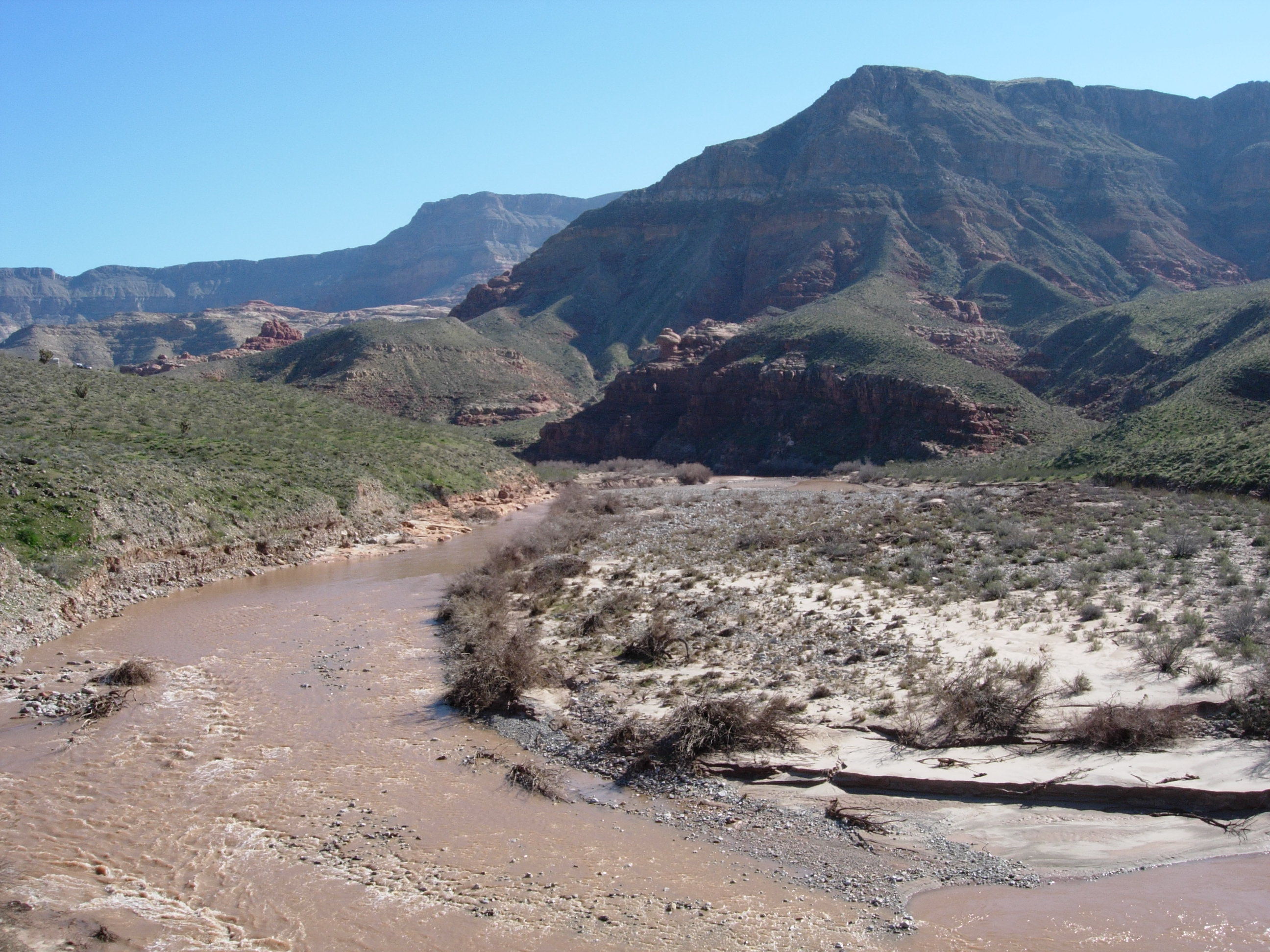
9. Glen Canyon National Recreation Area
Stretching from the beginning of the Grand Canyon at Lees Ferry in Arizona to the Orange Cliffs of southern Utah, our next Arizona landmark is an unparalleled location for water-based and backcountry recreation.
At #9 on our list of the Best Arizona Landmarks is Glen Canyon National Recreation Area.
Whether you prefer aquatic adventures or backcountry excitement, Glen Canyon’s got it going on! We’re talking over 1.25 million acres straddling two states.
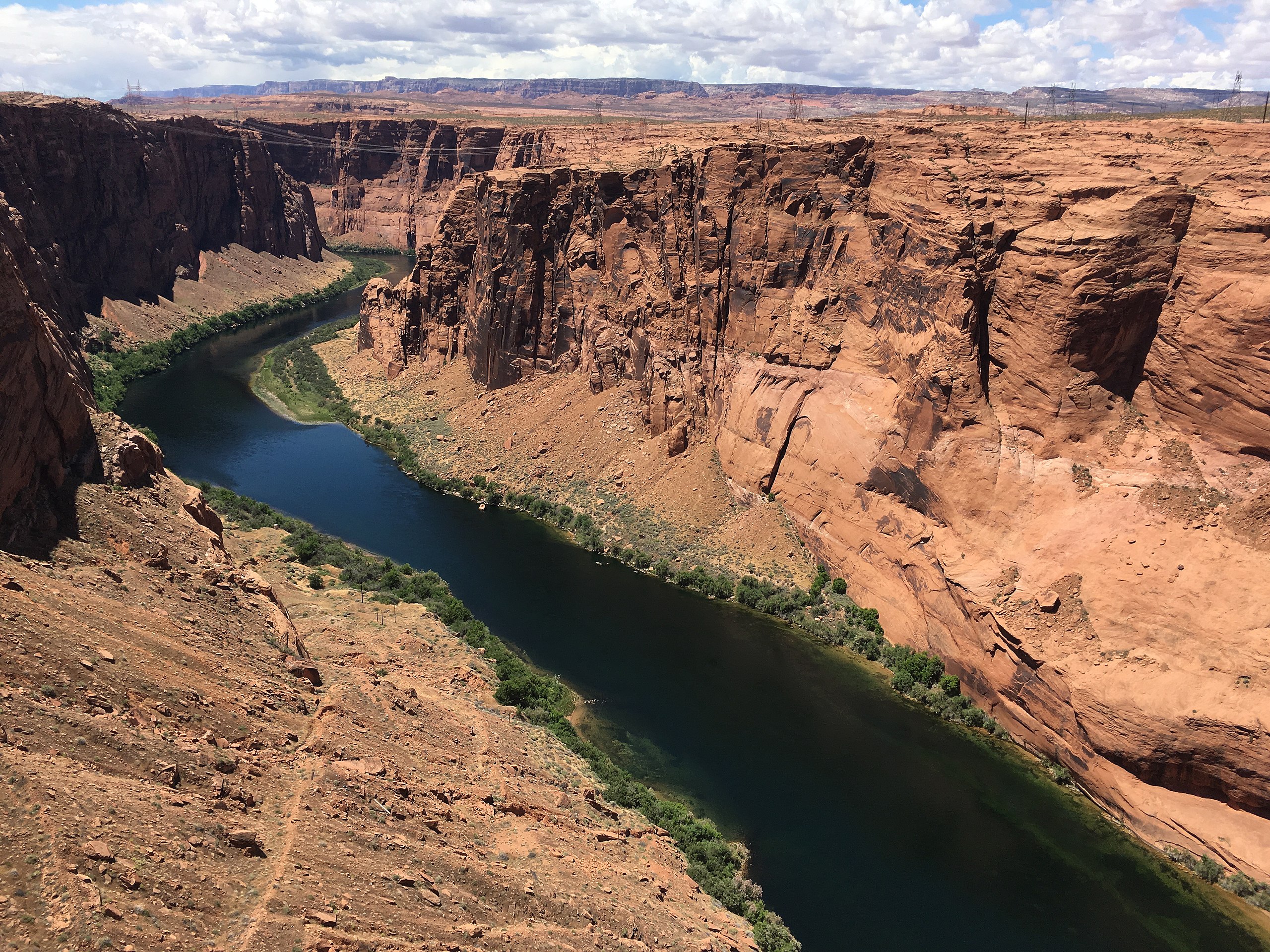
Here Are Some Things To Do At Glen Canyon
- Boating and water sports: The park is home to Lake Powell, which offers opportunities for boating, jet skiing, fishing, and swimming.
- Hiking and backpacking: The park has several hiking trails that offer scenic views of the canyons, mountains, and lake.
- Camping: There are several campgrounds in the park, including some that are accessible only by boat.
- Rock climbing and rappelling: The park has some of the best rock climbing and rappelling opportunities in the Southwest, with a variety of routes and levels of difficulty.
- Sightseeing and photography: The park offers many opportunities for sightseeing and photography, including scenic drives and overlooks that provide panoramic views of the lake and canyons.
- Ranger-led programs: The park offers a variety of ranger-led programs, such as guided hikes, boat tours, and campfire talks, that provide visitors with information about the park’s history, geology, and ecology.
- Archaeological sites: Glen Canyon is also known for its many ancient Native American sites, visitors can take guided tours to learn about the ancient people that lived in this area.
- Kayaking and Canoeing: Lake Powell offers many areas for visitors to explore by kayak or canoe.
- 4-wheel drive: Some roads in the park are accessible only by 4-wheel drive vehicles, and offer a unique experience of the park.
- Star Gazing: The park is a perfect spot for stargazing and night sky photography with minimal light pollution.
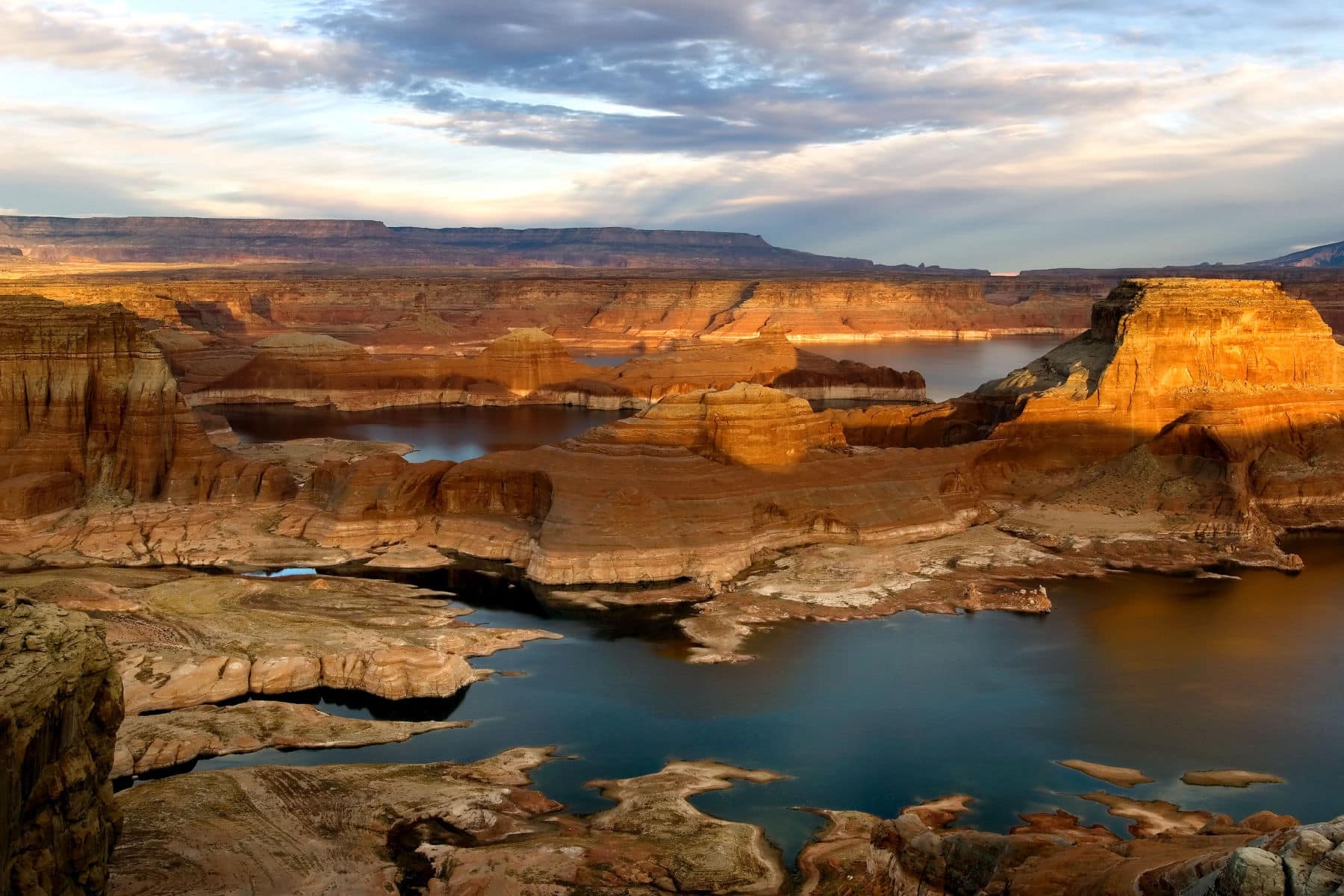
8. Navajo National Monument
Our next Arizona landmark preserves three large pueblos dating to the 13th century C.E., as well as the archaeological evidence that documents human use in the region over the past several thousand years.
At #8 on our list of the Best Arizona Landmarks is Navajo National Monument.
Navajo National Monument is located in northeastern Arizona, on the Navajo Nation. The monument was established in 1909 to protect and preserve three of the largest and most well-preserved cliff dwellings sites of the ancient Puebloan people, also known as the Anasazi.
The three sites, Betatakin, Keet Seel, and Inscription House, feature well-preserved architecture and rock art, and offer a glimpse into the lives of the Puebloan people who lived there more than 700 years ago.
The monument’s visitor center features exhibits on the history and culture of the Puebloan people and the Navajo Nation, and offers ranger-led tours to the cliff dwellings sites.
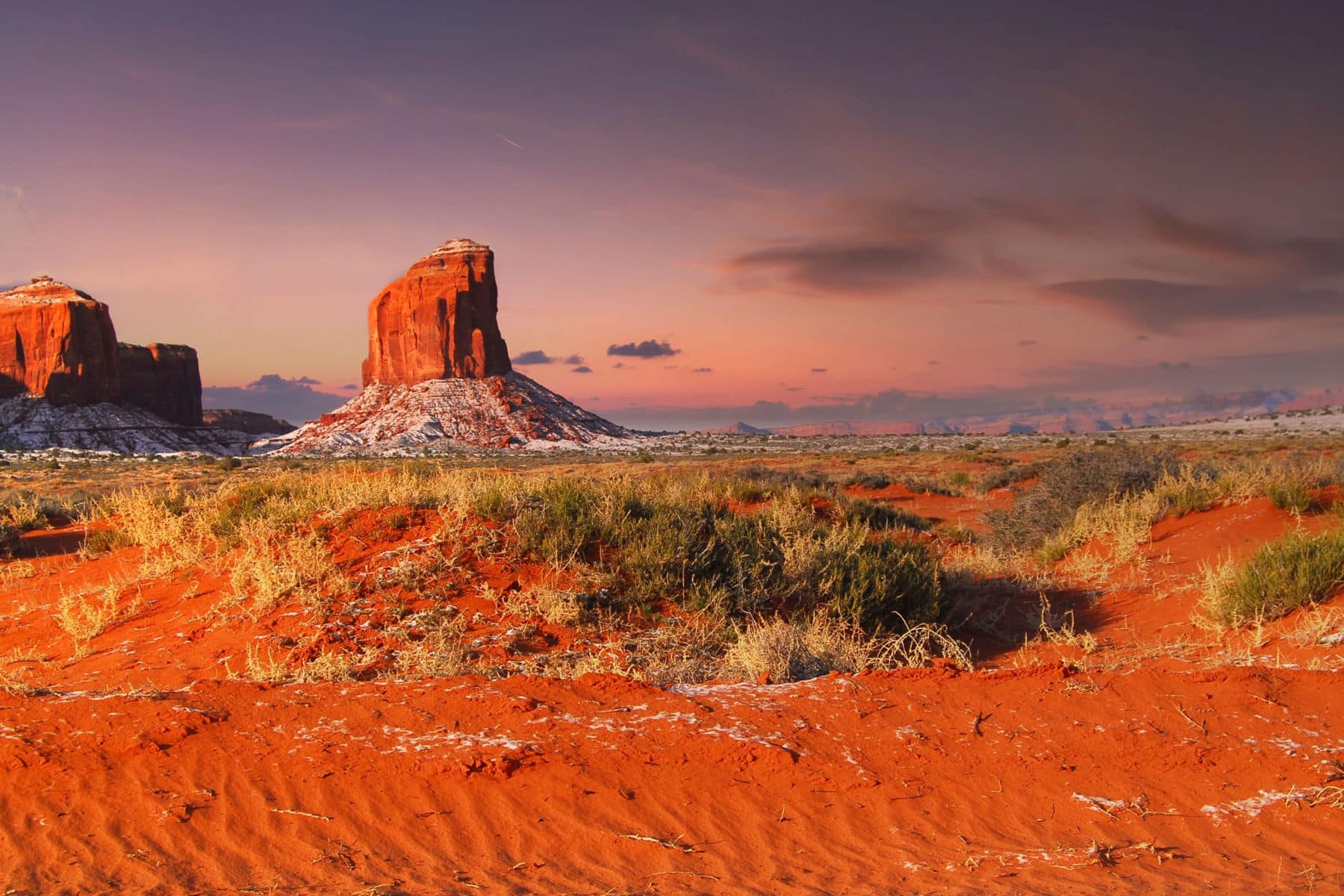
Check Out The Amazing Cliff Dwelling Sites
Visitors can also hike the trails that lead to the cliff dwellings sites, including the Betatakin trail, which is a moderate 3-mile round trip hike that leads to the Betatakin ruins. The Keet Seel trail, and the Inscription House trail are longer and more strenuous, but offer a more in-depth look at the ruins.
The monument also offers guided ranger tours, a campground and picnic areas.
The Navajo National Monument offers an opportunity to learn about the ancient Puebloan people, the Anasazi, and the Navajo Nation, and to explore the well-preserved ruins of the ancient cliff dwellings sites.
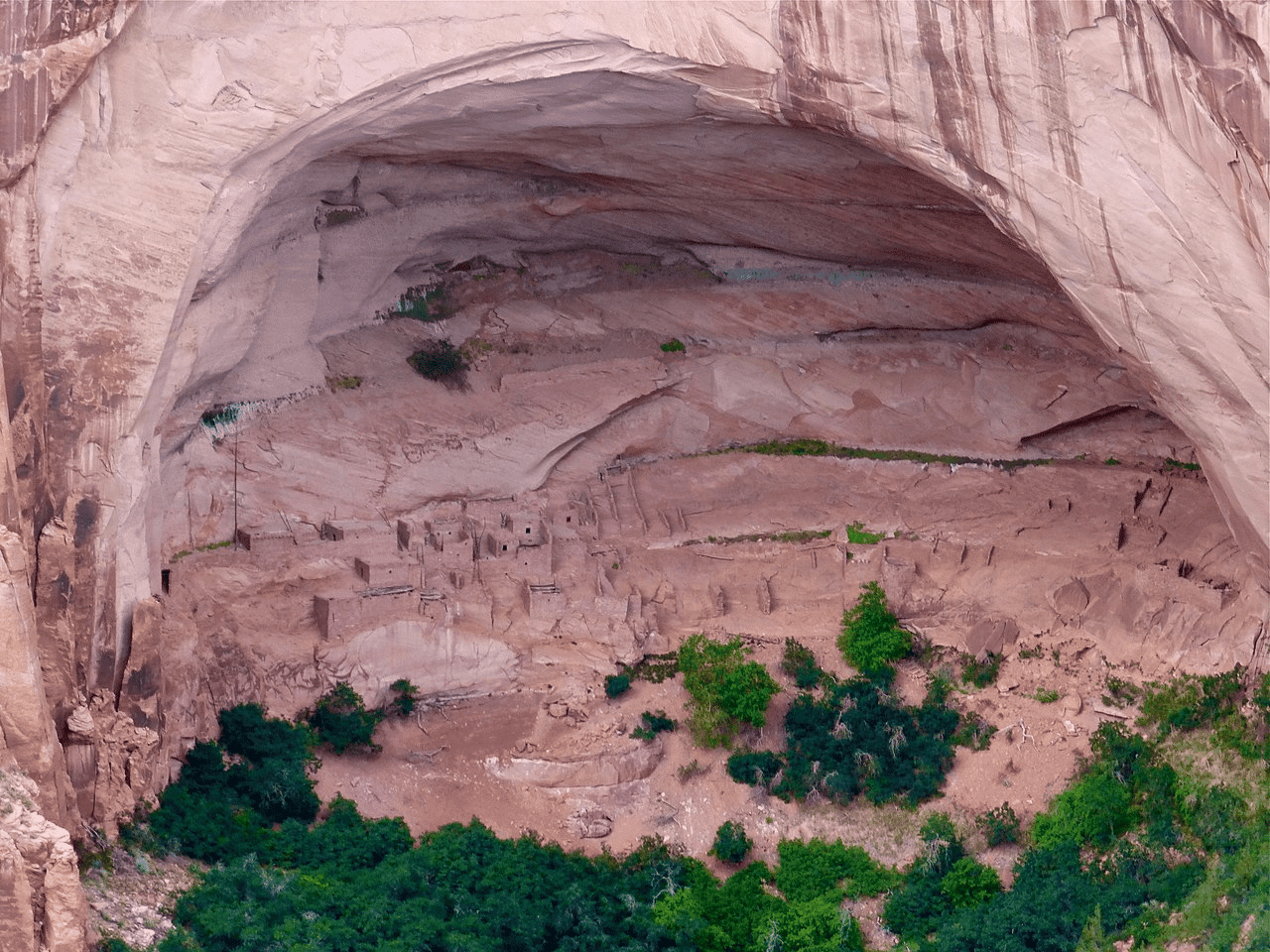
Walk The Ground Trod By Native Americans Hundreds Of Years Ago
Imagine walking the same ground trod by Native Americans centuries ago. There are three self-guided trails. They are:
- The Sandal Trail which is a 1.3 mile round-trip paved trail to the Betatakin Cliff Dwelling overlook.
- The Aspen Trail which is a 0.8 mile steep round-trip nature trail that leads to an overlook of a relict forest on the canyon floor.
- The Canyon View Trail which is a 0.8 mile round-trip canyon rim trail that leads to the park’s historic ranger station and provides views of the canyon.
There are also ranger-guided cliff-dwelling tours available at Betatakin and Keet Seel.
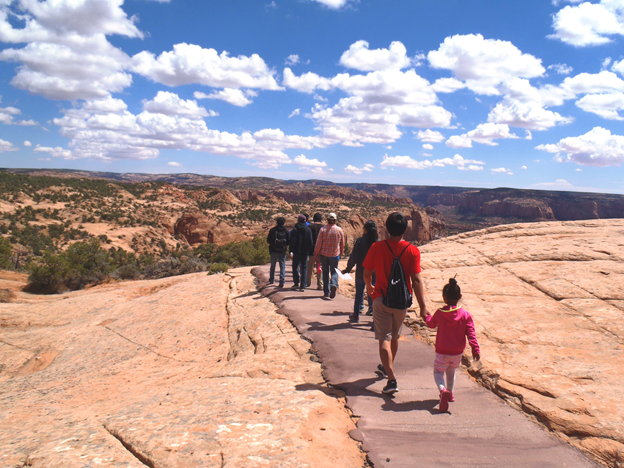
7. Fort Bowie National Historic Site
Our next Arizona landmark witnessed almost 25 years of conflict between the Chiricahua Apache and the US Army, and remains a tangible connection to the turbulent era of the late 1800s.
At #7 on our list of the Best Arizona Landmarks is Fort Bowie National Historic Site.
Fort Bowie National Historic Site is located in southeastern Arizona. It preserves the remains of a 19th-century military outpost that played a key role in the conflict between the US Army and the Apache people.
The fort was established in 1862 by the California Column, a Union Army force that was sent to the region to prevent Confederate troops from gaining control of the Southwest. The fort was named after Colonel George Washington Bowie, who was killed in a battle with the Apache in 1861.
In the years following its establishment, Fort Bowie became an important military outpost that was tasked with protecting settlers, miners, and travelers from Apache raids. The fort was also involved in several military campaigns against the Apache, including the Apache Wars of the 1870s.
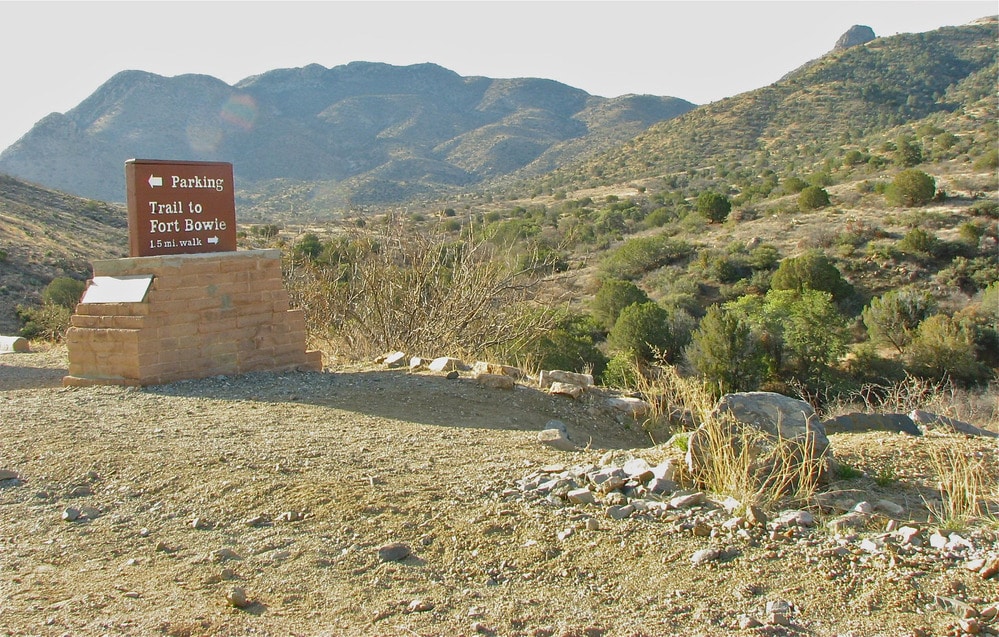
The Bascom Affair
One of the most significant events in the history of Fort Bowie was the Bascom Affair, which occurred in 1861. In this incident, a group of Apache warriors kidnapped a young boy and a herd of cattle from a nearby ranch.
In response, Lieutenant George Bascom led a group of soldiers to the Apache camp, where they demanded the return of the boy and the cattle.
The Apache denied any involvement in the raid and refused to comply with the demands. The soldiers then opened fire on the Apache camp, killing several people, including the son of the Apache chief Cochise.
This incident marked the beginning of a long and bloody conflict between the Apache and the US Army.
Visitors Can Explore The Remains Of The Fort
Visitors can explore the remains of the fort, including the officers’ quarters, the hospital, and the guardhouse. The site also features a visitor center with exhibits on the history of the fort and the Apache Wars, as well as a self-guided trail that leads through the fort’s ruins and the surrounding area.
The trail also offers visitors the opportunity to explore the Chiricahua Apache culture and the natural beauty of the area.
Fort Bowie National Historic Site offers visitors an opportunity to learn about the history of the Apache Wars and the role of the U.S. Army in the American West. It also offers visitors the opportunity to explore the natural beauty of the area and the Chiricahua Apache culture.

6. Petrified Forest National Park
Among the incredible Arizona landmarks you will discover a place that is like something from another world. At #6 on our list of the Best Arizona Landmarks is Petrified Forest National Park.
Petrified Forest National Park, located in northeastern Arizona, is home to the Rainbow Forest. It’s chock full of colorful petrified wood.
If you’re new to the park then the visitor center is always a great place to start out. There’s an 18 minute orientation video to familiarize you with the park. There’s also a bookstore, exhibits, gift shop, restaurant and public amenities.
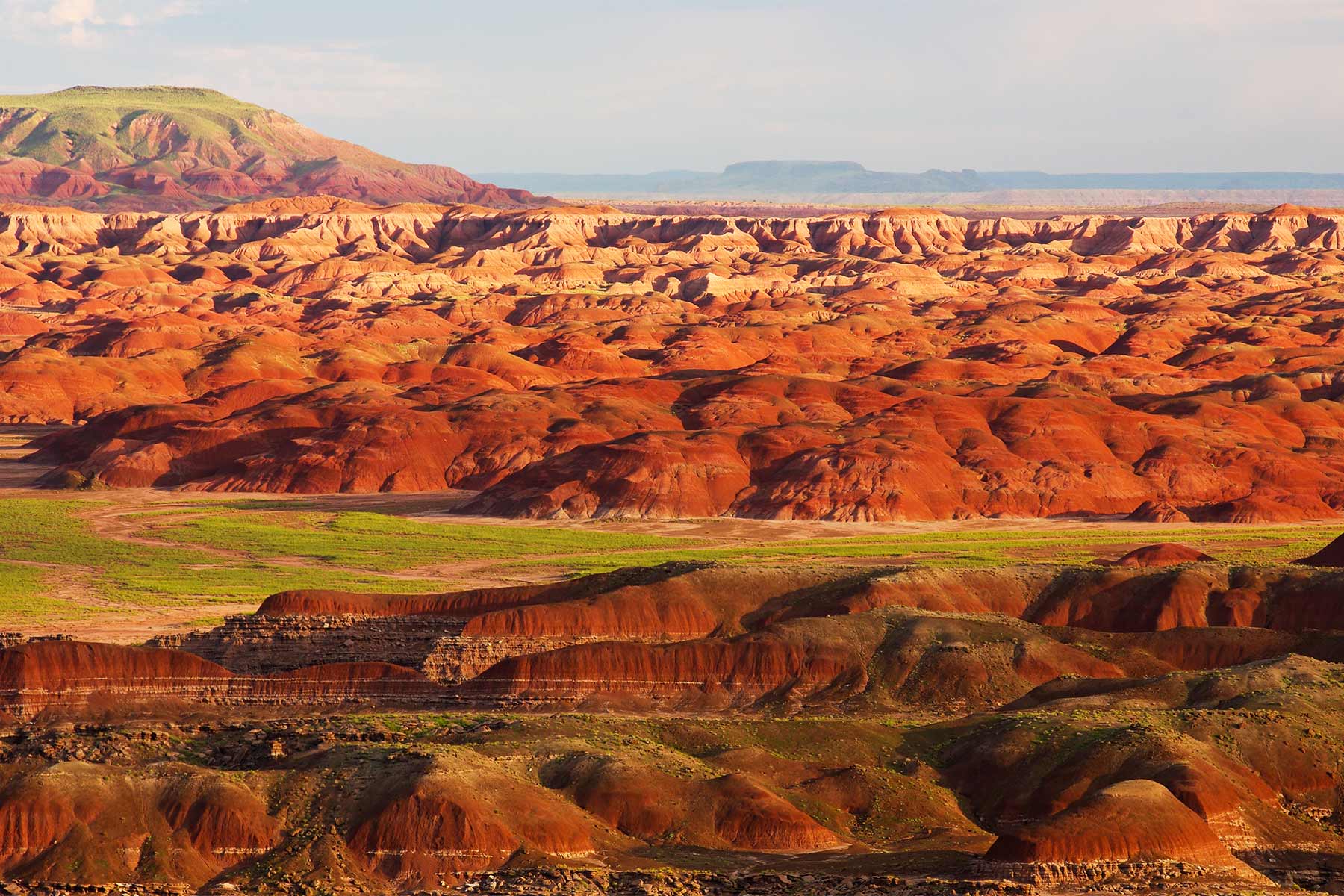
Here Are Some Things To Do At Petrified Forest National Park
- View the petrified wood: One of the main attractions at Petrified Forest National Park is the petrified wood, which is estimated to be over 200 million years old. Visitors can view petrified logs and stumps that have been preserved through the process of fossilization.
- Hike the trails: Petrified Forest National Park has several hiking trails that offer stunning views of the park’s unique landscapes. Some popular trails include the Painted Desert Rim Trail, Blue Mesa Trail, and Crystal Forest Trail.
- Visit the historic structures: The park is home to several historic structures, including the Painted Desert Inn National Historic Landmark. Visitors can explore the inn and learn about the history of the park’s early tourism industry.
- View the petroglyphs: Petrified Forest National Park is home to several ancient petroglyphs, or rock carvings, that date back thousands of years. Visitors can view these petroglyphs at various locations throughout the park.
- Attend a ranger program: The park offers a variety of ranger-led programs, including guided hikes, talks, and demonstrations. These programs are a great way to learn more about the park’s geology, ecology, and cultural history.
- Scenic drive: Take a drive through the park’s scenic roads and experience the beautiful vistas of the Painted Desert and the petrified wood.
- Wildlife watching: The park is home to a variety of wildlife, including pronghorn, coyotes, and bighorn sheep. Visitors can watch for wildlife from designated overlooks and hiking trails.
- Photography: Petrified Forest National Park offers endless opportunities for photography, from the colorful landscapes to the unique petrified wood. Don’t forget to bring your camera!
- Junior Ranger program: The park offers a Junior Ranger program for kids, which includes activities and educational materials designed to teach kids about the park’s natural and cultural resources.
- Camping: Petrified Forest National Park offers several camping options, including backcountry camping, group camping, and RV camping. Camping is a great way to experience the park’s unique landscapes and night sky.
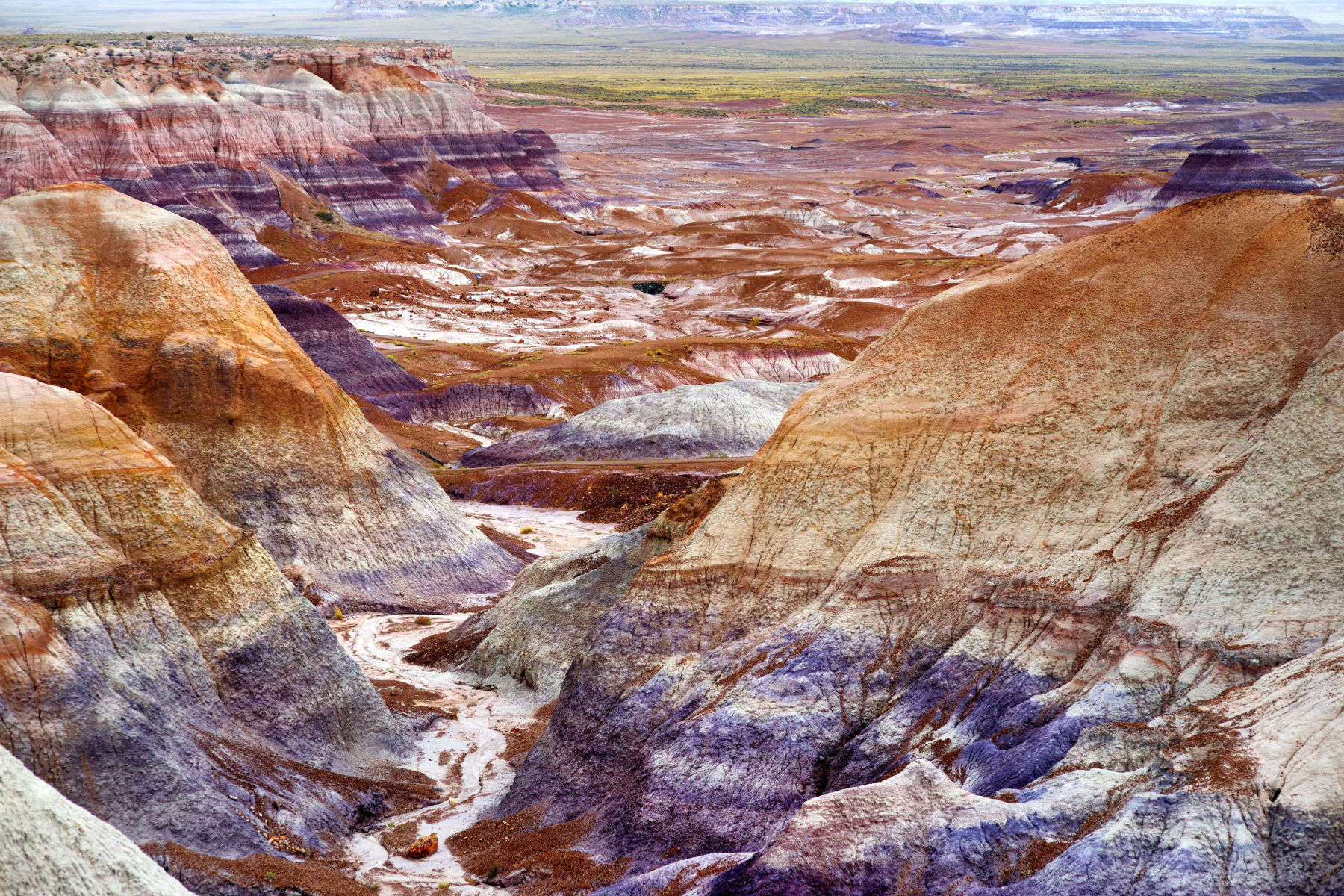
Top 5 Arizona Landmarks
5. Coronado National Memorial
We’re on to the Top 5 Arizona Landmarks. At #5 is an amazing place which protects a unique concentration of pristine Archaic-aged human occupation sites in southeast Arizona as well as archeological sites spanning early, middle, and late Archaic periods, and historic sites related to mining and ranching and the Civilian Conservation Corps.
Welcome to Coronado National Memorial.
The memorial was established in 1952 to commemorate the expedition of Francisco Vázquez de Coronado, a Spanish conquistador who led an expedition into the American Southwest in the 1540s in search of the legendary Seven Cities of Gold.
The memorial is located on the site where Coronado and his expedition first set foot in what is now the United States.
It includes a visitor center with exhibits on the history of Coronado’s expedition and the American Southwest, as well as a bookstore and a picnic area.
Visitors can hike several trails that offer beautiful views of the surrounding landscape, including the Coronado Peak Trail, which leads to the summit of Coronado Peak and offers panoramic views of the surrounding area. The memorial also offers guided tours, ranger-led programs, and special events throughout the year.
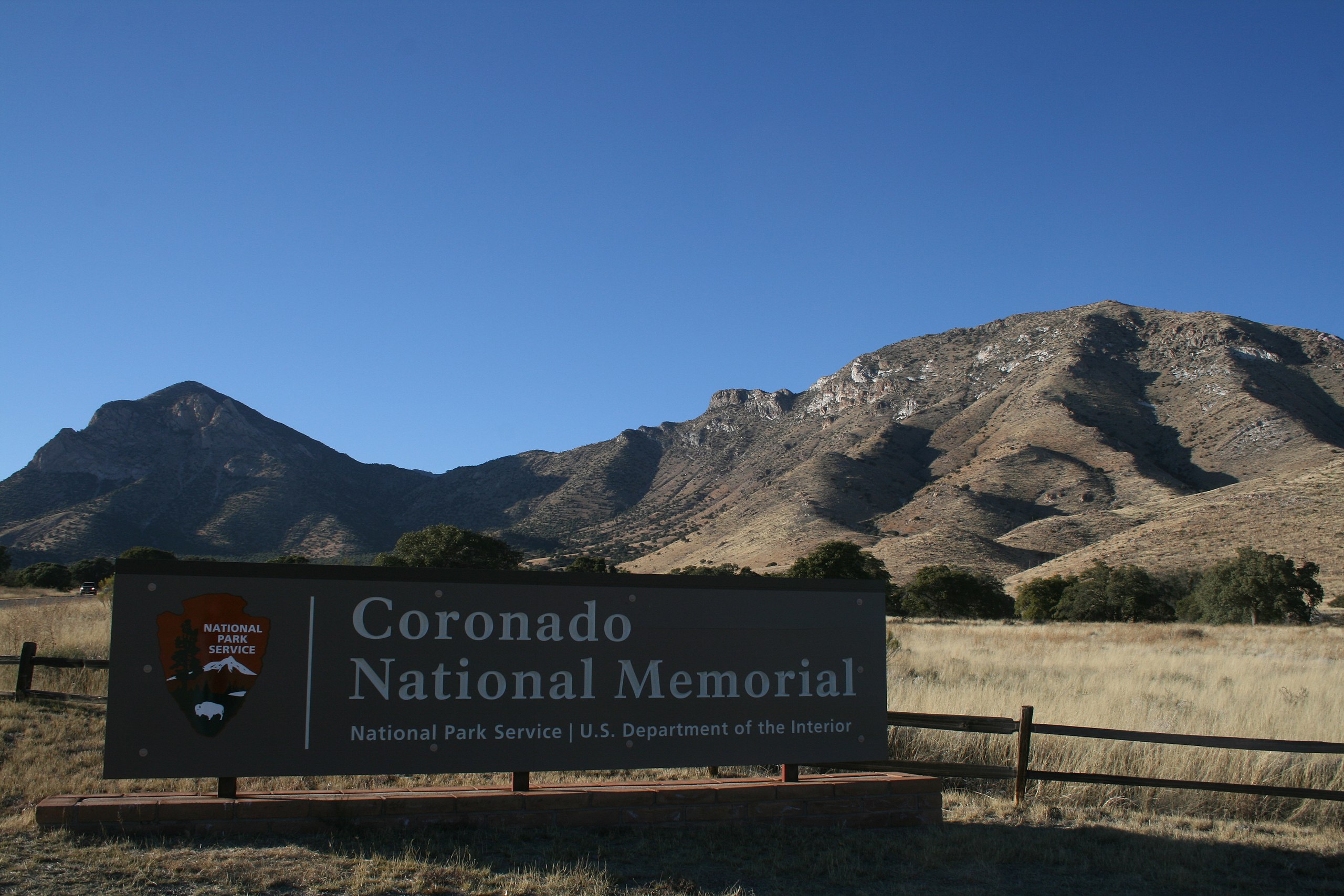
Things To Do
Here are some things to do while visiting:
- Hike the trails: The park has several hiking trails that range in difficulty from easy to strenuous. The Coronado Cave Trail is a popular option that takes visitors to a large cave filled with stalactites and stalagmites.
- Attend a ranger-led program: The park offers ranger-led programs, including guided hikes, birdwatching tours, and educational talks. Check the park’s website for a schedule of events.
- Learn about the history: Visit the visitor center to learn about the history of the area.
- Birdwatching: The park is home to a variety of bird species, including several that are rare or endangered. Bring your binoculars and look for species such as the painted redstart, yellow-eyed junco, and the elegant trogon.
- Take in the views: The park offers stunning views of the surrounding mountains and valleys. Take a drive along the scenic Coronado Peak Drive or hike to one of the park’s overlooks for panoramic views.
- Camping: The park has a small campground with sites available on a first-come, first-served basis. Enjoy a night under the stars in the peaceful surroundings.
- Picnic: The park has several picnic areas with tables and grills. Bring a picnic lunch and enjoy the views while you eat.
- Photography: The park offers a variety of photographic opportunities, including wildlife, landscapes, and historic structures. Don’t forget your camera!
- Explore nearby attractions: The park is located near several other attractions, including the historic town of Bisbee, the Kartchner Caverns State Park, and the San Pedro Riparian National Conservation Area. Plan a day trip and explore the area.

4. Casa Grande Ruins National Monument
Our next Arizona landmark exemplifies early adaptation to the desert environment by the Ancestral Sonoran Desert People, including use of nearby Gila River and others for creating the most extensive prehistoric irrigation-based agricultural desert society in North America.
At #4 on our list of the Best Arizona Landmarks is the Casa Grande Ruins National Monument.
Casa Grande is a historic site located in Coolidge, Arizona. The monument preserves the remains of an ancient Hohokam village, including a large four-story structure known as the “Great House.”
The Great House is believed to have been built between 1150 and 1300 AD and is one of the largest and most complex prehistoric structures in North America.
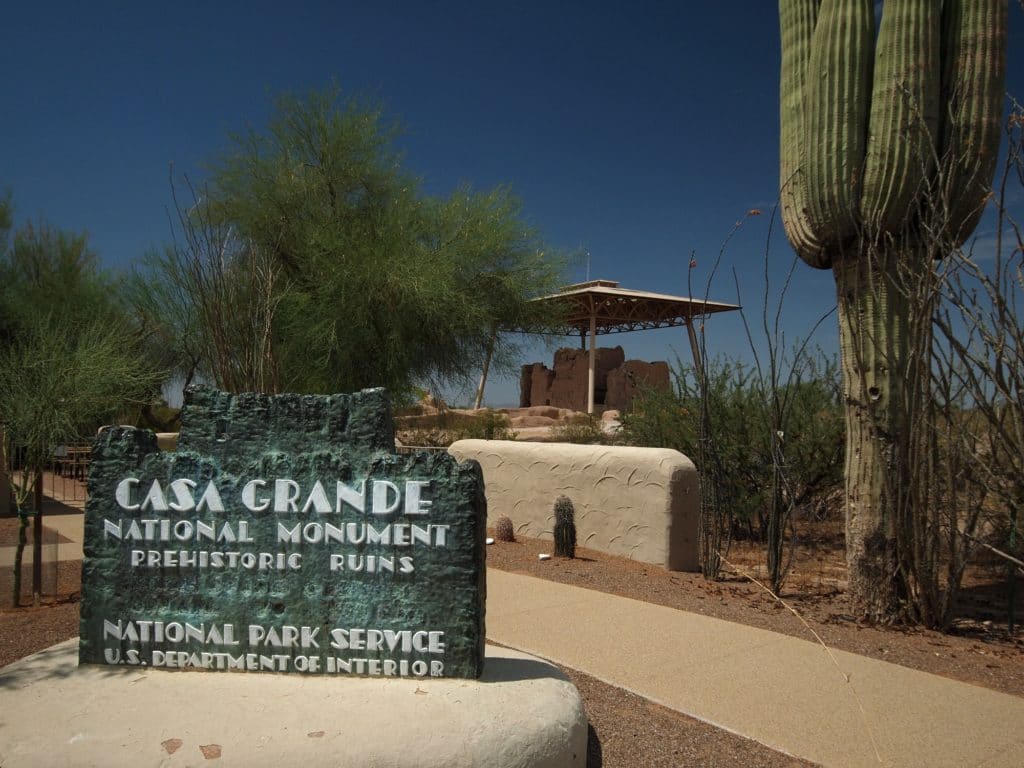
Things To Do
- Explore the Casa Grande: The centerpiece of the monument is the Casa Grande, a four-story adobe structure that was built by the Hohokam people in the 14th century. Visitors can take a guided tour or explore the ruins on their own.
- Attend a ranger-led program: Casa Grande Ruins National Monument offers a variety of ranger-led programs, including guided tours, talks, and demonstrations. These programs are a great way to learn more about the history and culture of the Hohokam people.
- Walk the trails: The monument has several hiking trails that offer visitors the chance to explore the surrounding desert landscape. The Desert View Trail is an easy 0.5-mile loop that offers stunning views of the Casa Grande and the surrounding mountains.
- Picnic: Casa Grande Ruins National Monument has a picnic area where visitors can enjoy a meal surrounded by the beautiful desert scenery.
- Visit the museum: The monument’s visitor center has a museum with exhibits on the history and culture of the Hohokam people, as well as the archaeology of the Casa Grande site.
- Birdwatching: The monument is home to a variety of bird species, including Harris’s hawks, Gambel’s quail, and great horned owls. Bring your binoculars and see how many you can spot.
- Photography: The Casa Grande ruins, desert landscape, and beautiful skies make Casa Grande Ruins National Monument a photographer’s paradise. Bring your camera and capture some amazing shots.
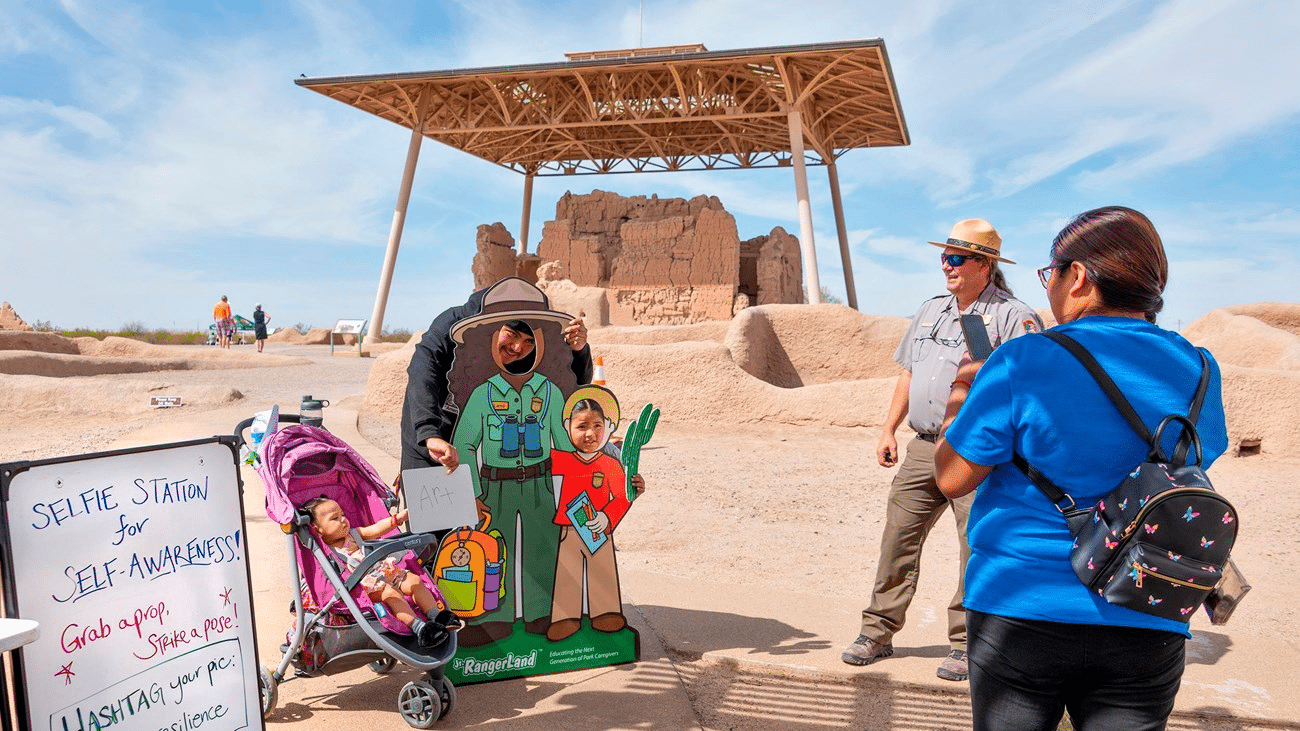
3. Saguaro National Park
We’re More Than Just Parks, but that doesn’t mean that we’ve forgotten about them. At #3 on our list of the Best Arizona Landmarks is a place that protects our largest cacti species, the saguaro, and features camping, hiking, and backpacking trails for every level. Welcome to Saguaro National Park.
Among the Arizona National Parks are 3 capital letter national parks. Saguaro National Park is one of them. It’s unique in that it is bisected by the city of Tucson.
The two districts are – East & West. It takes 30-45 minutes to travel between the two districts. The park is home to the Saguaro Cactus. It’s a large, tree-sized cactus with a relatively long lifespan–up to 250 years.
The primary outdoor activities are biking, camping, hiking and horseback riding. It’s well worth a visit to this park as the desert beauty makes for an otherworldly experience.
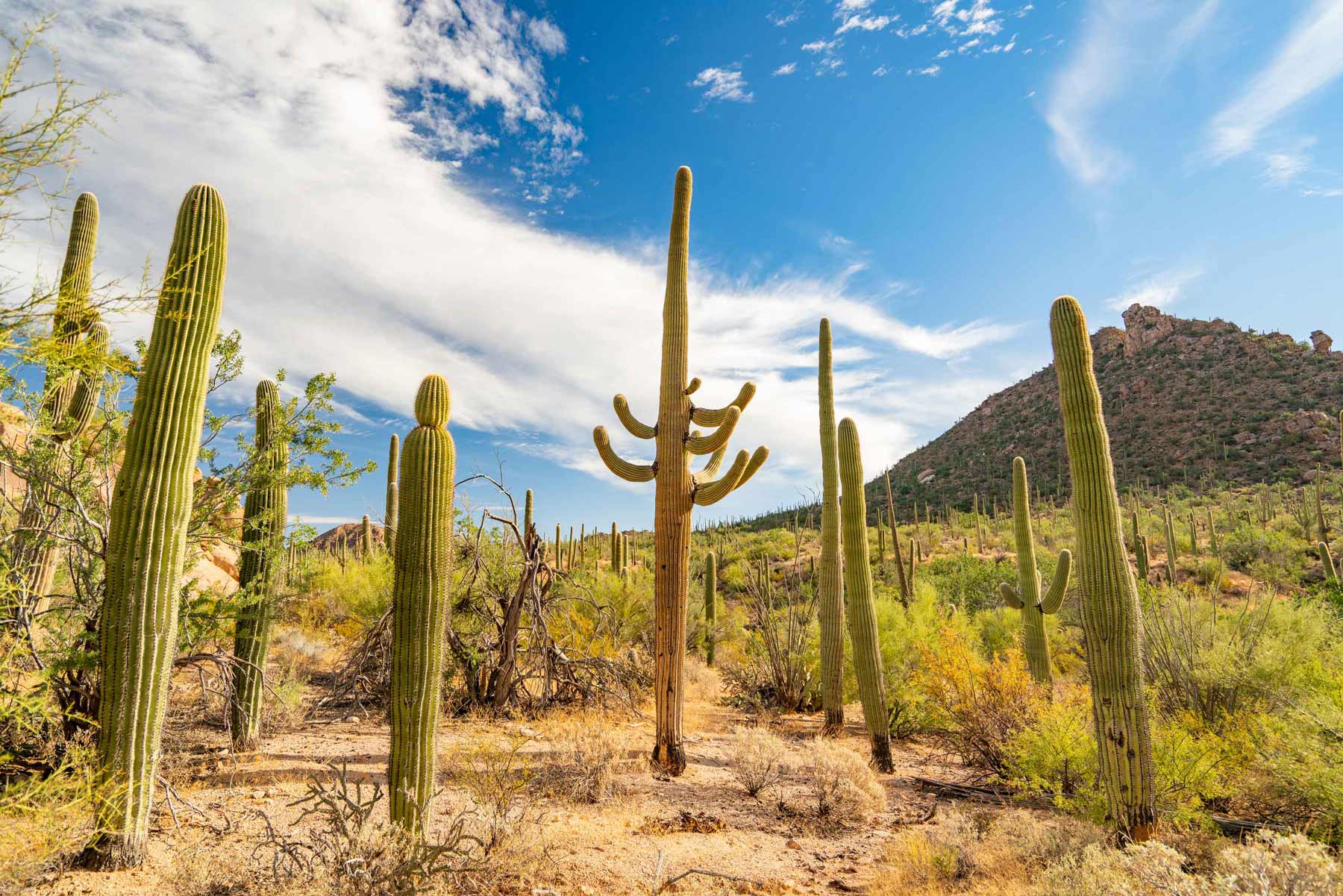
Things To Do At Saguaro National Park East District
The Cactus Forest Scenic Loop Drive is a paved, combination one-way and two-way road that features several trailheads, scenic vistas, and pullouts in a total of 8 miles.
To reach the hiking trails from the visitor center, you must drive into the park on the Loop Drive. The first trailhead is accessed in about 2 miles and begins at the Mica View Picnic Area. There are several trailheads with parking off the Loop Drive.
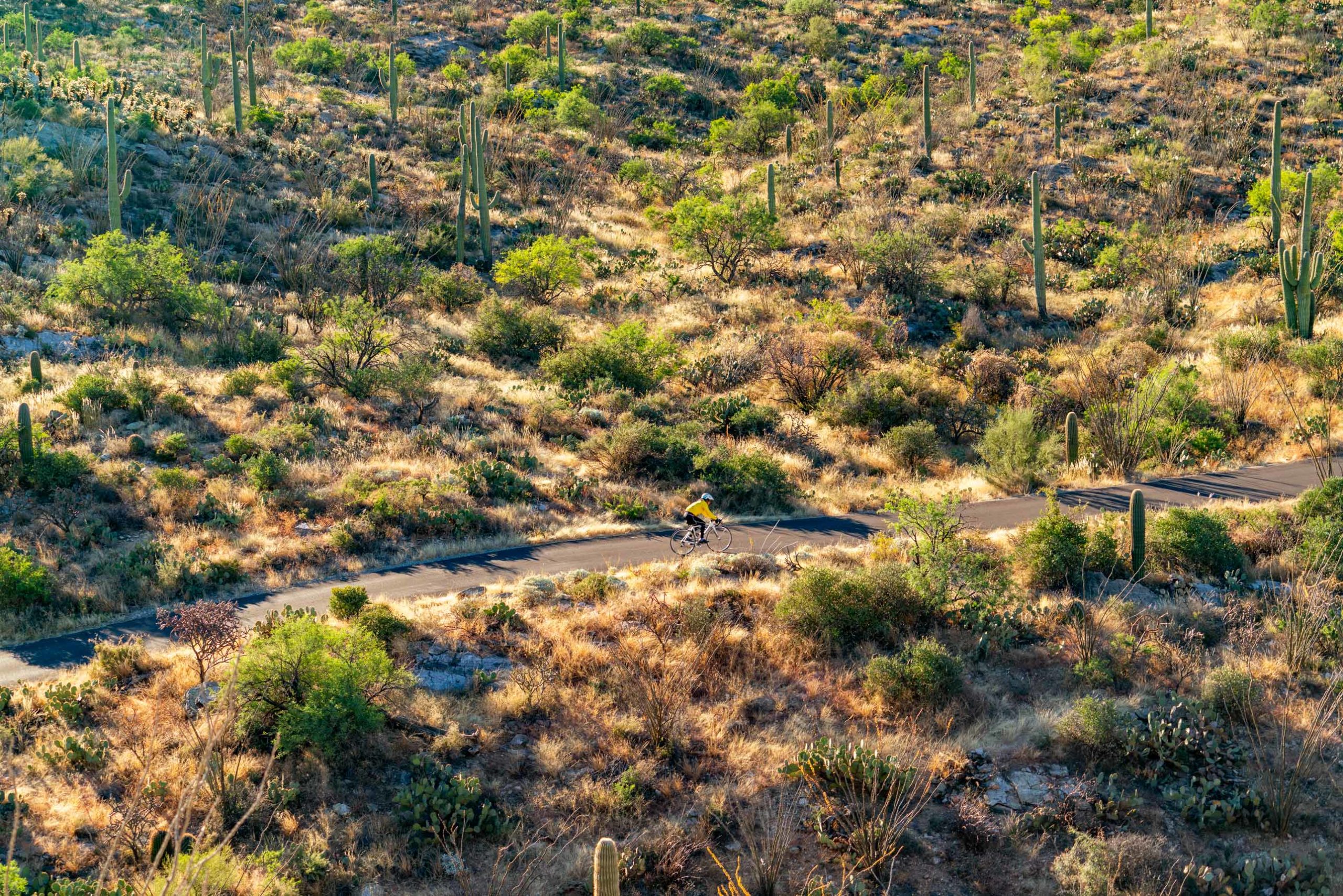
Things To Do At Saguaro National Park West District
The Scenic Bajada Loop Drive is a great way to explore the district’s foothills. There are scenic pullouts, picnic areas, and hiking trailheads in a 6 mile loop.
Bicycling is permitted along the Bajada Loop Drive and all paved roads. Bicycling is not permitted on any trails, except the 0.5 mile Belmont Multi-use trail and the 2.5 mile Golden Gate Multi-use trail. (Source: NPS)
Check Out Our Saguaro Film
SAGUARO is the culmination of weeks spent filming in one of the most unique and vibrant deserts in the world, the Sonoran Desert.
Encompassing over 90,000 acres, Saguaro National Park preserves vast forests of the iconic saguaro cactus, rare wildlife, and majestic landscapes.
2. Monument Valley
We’re on to our final 2 Arizona landmarks. In the runner-up spot at #2 is a magical place that’s host to towering sandstone rock formations that have been sculpted over time and soar 400 to 1,000 feet above the valley floor.
Combined with the surrounding mesas, buttes, and desert environment, it’s truly one of the natural wonders of the world. Welcome to Monument Valley.
Monument Valley is a region of the Colorado Plateau characterized by a unique and stunning landscape of towering sandstone formations and mesas, located on the border of Arizona and Utah in the southwestern United States.
The valley is known for its iconic red rock formations that rise up to 1,000 feet (305 meters) above the surrounding terrain.
The area is sacred to the Navajo people and has been used as a filming location for many Western movies.
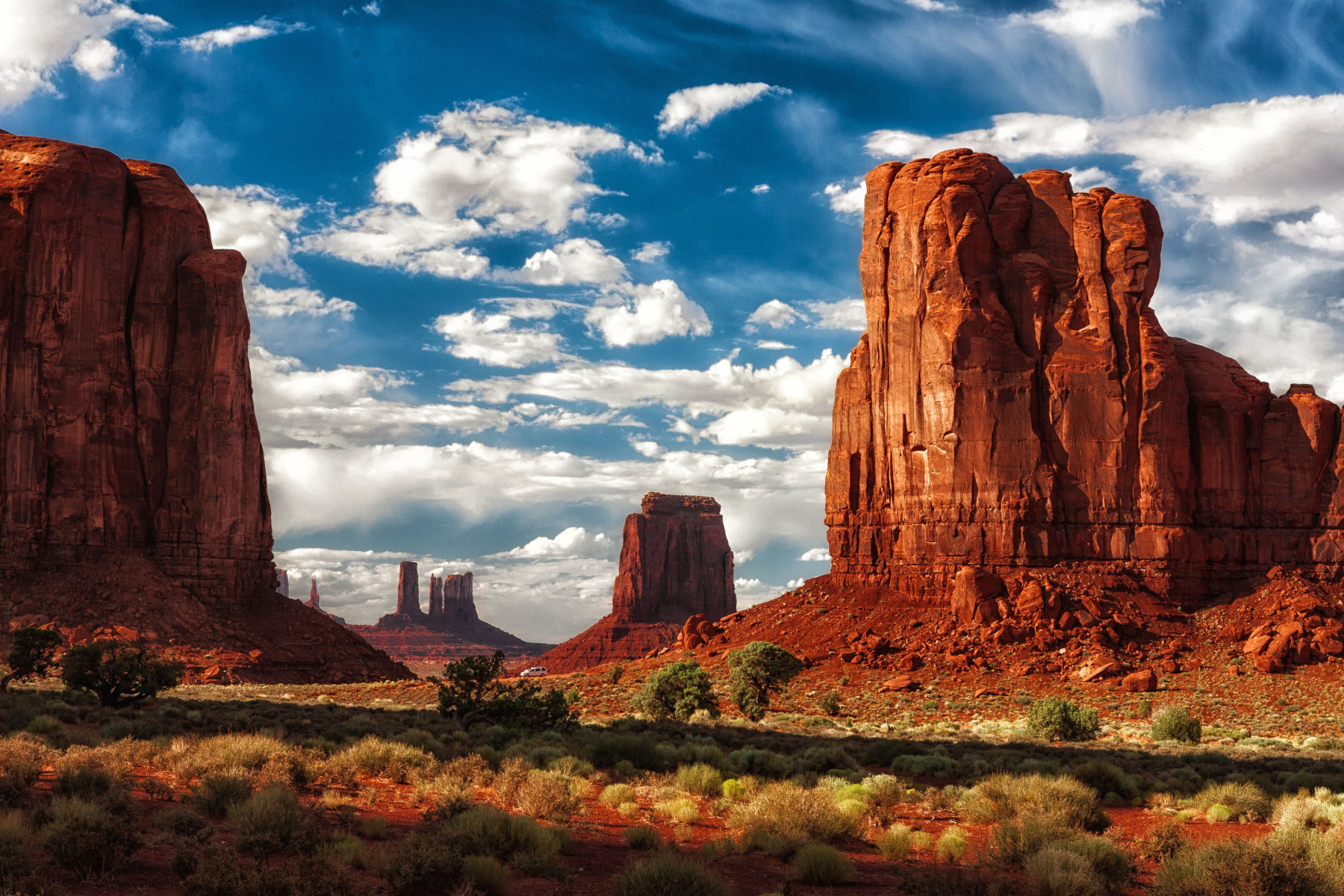
It’s Located Within The Navajo National Reservation
Monument Valley is located within the Navajo Nation Reservation, and visitors can only access the area with a Navajo guide or by paying an entrance fee to the tribal park. The park offers guided tours by local Navajo guides in traditional vehicles, such as open-air jeeps, and visitors can also explore the park on foot on several hiking trails.
Some of the most famous landmarks in Monument Valley include the Mittens, two towering rock formations that resemble a pair of mittens, and the Totem Pole, a slender spire that rises over 400 feet (122 meters) from the valley floor. Other notable formations include: the Three Sisters, the Spearhead, and the Elephant Butte.
In addition to its breathtaking landscapes, Monument Valley also offers visitors the opportunity to experience Navajo culture and traditions.
Visitors can learn about Navajo history and culture at the park’s visitor center and museum, and can also take part in traditional Navajo activities such as rug weaving, frybread making, and Navajo song and dance performances.
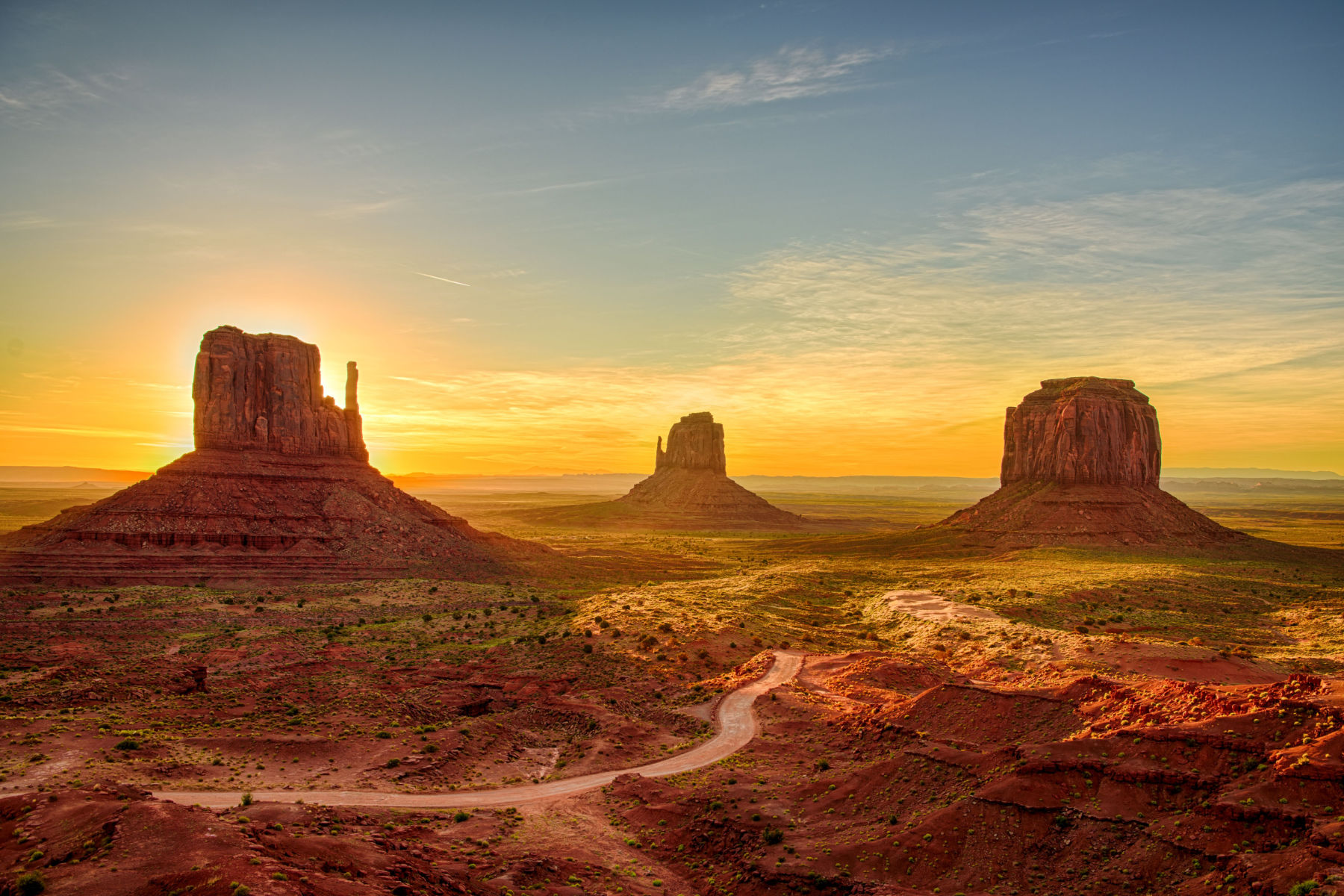
1. Grand Canyon National Park
As our #1 Arizona Landmark, More Than Just Parks has selected what we consider to be the most iconic landmark in the Grand Canyon State and one of the most iconic landmarks in the world.
Welcome to Grand Canyon National Park featuring one of the most amazing canyons on the planet.
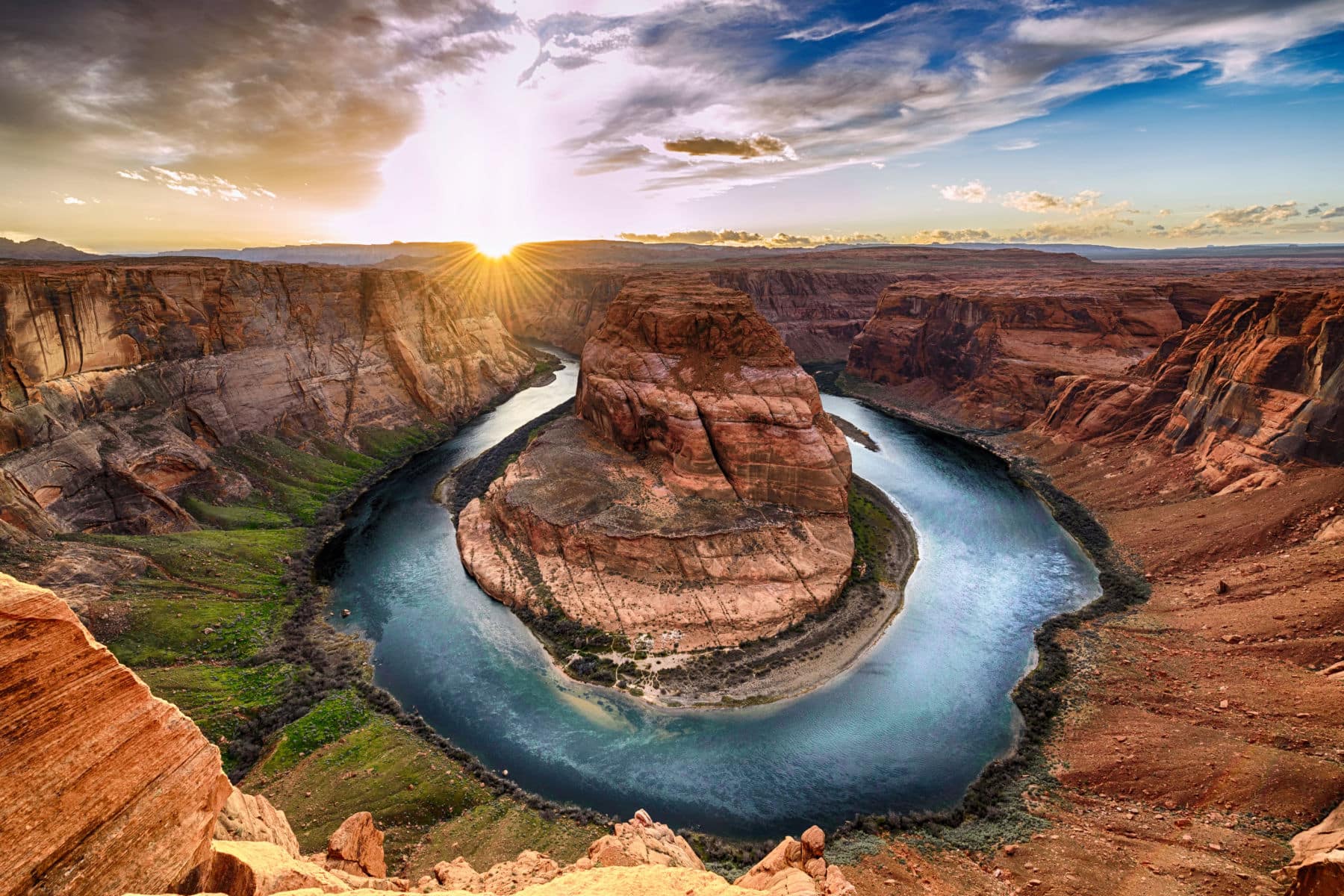
A Short History Of The Grand Canyon
The Grand Canyon is a natural wonder located in northern Arizona. It’s approximately 277 miles long, up to 18 miles wide, and up to 1 mile deep. It was formed by millions of years of erosion by the Colorado River.
The Grand Canyon is a geologic marvel and one of the most studied geologic landscapes in the world. Its history can be traced back over two billion years, but the human history of the canyon is much shorter.
The earliest known human occupants of the Grand Canyon were hunter-gatherer societies who lived in the area around 12,000 years ago. These people left behind a variety of artifacts, including stone tools, baskets, and pottery.
Later, the Ancestral Puebloans (also known as the Anasazi) lived in the area from around 500-1200 AD. They left behind cliff dwellings and other structures that can still be seen today.
In the 16th century, Spanish explorers first encountered the Grand Canyon.
Francisco Coronado led an expedition in search of the Seven Cities of Gold and is believed to have been the first European to see the canyon. However, the canyon remained relatively unknown and unexplored for several centuries.
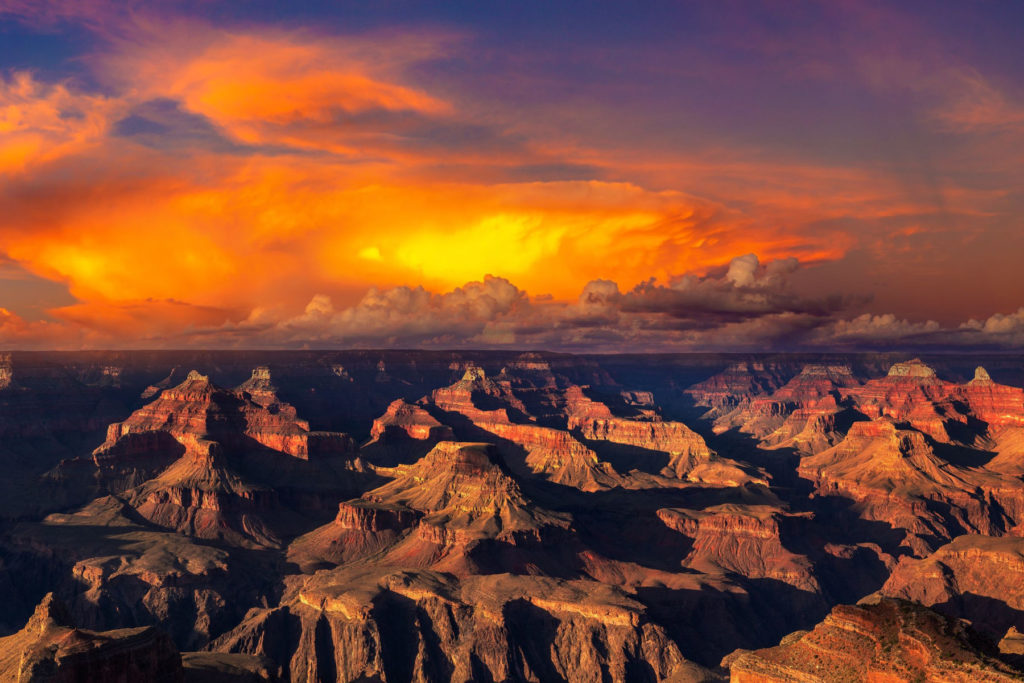
The First Recorded Journey Through The Canyon
The first recorded journey through the canyon was made by a group led by John Wesley Powell in 1869. Powell was a geologist and explorer who led a team of nine men on a dangerous and challenging expedition down the Colorado River and through the Grand Canyon. The journey took three months and was marked by hardship and danger, including the loss of several boats and supplies.
The Grand Canyon quickly became a popular destination for tourists and adventurers after Powell’s expedition. The Santa Fe Railroad built a spur line to the South Rim in 1901, and by the early 20th century, the Grand Canyon had become one of the most popular tourist destinations in the United States.
Today, the Grand Canyon continues to draw millions of visitors each year, and is protected as a national park. The park encompasses more than one million acres and includes numerous hiking trails, campgrounds, and visitor centers.
The Grand Canyon remains one of the most awe-inspiring and beloved natural wonders in the world, and a testament to the power of nature and the resilience of the human spirit.
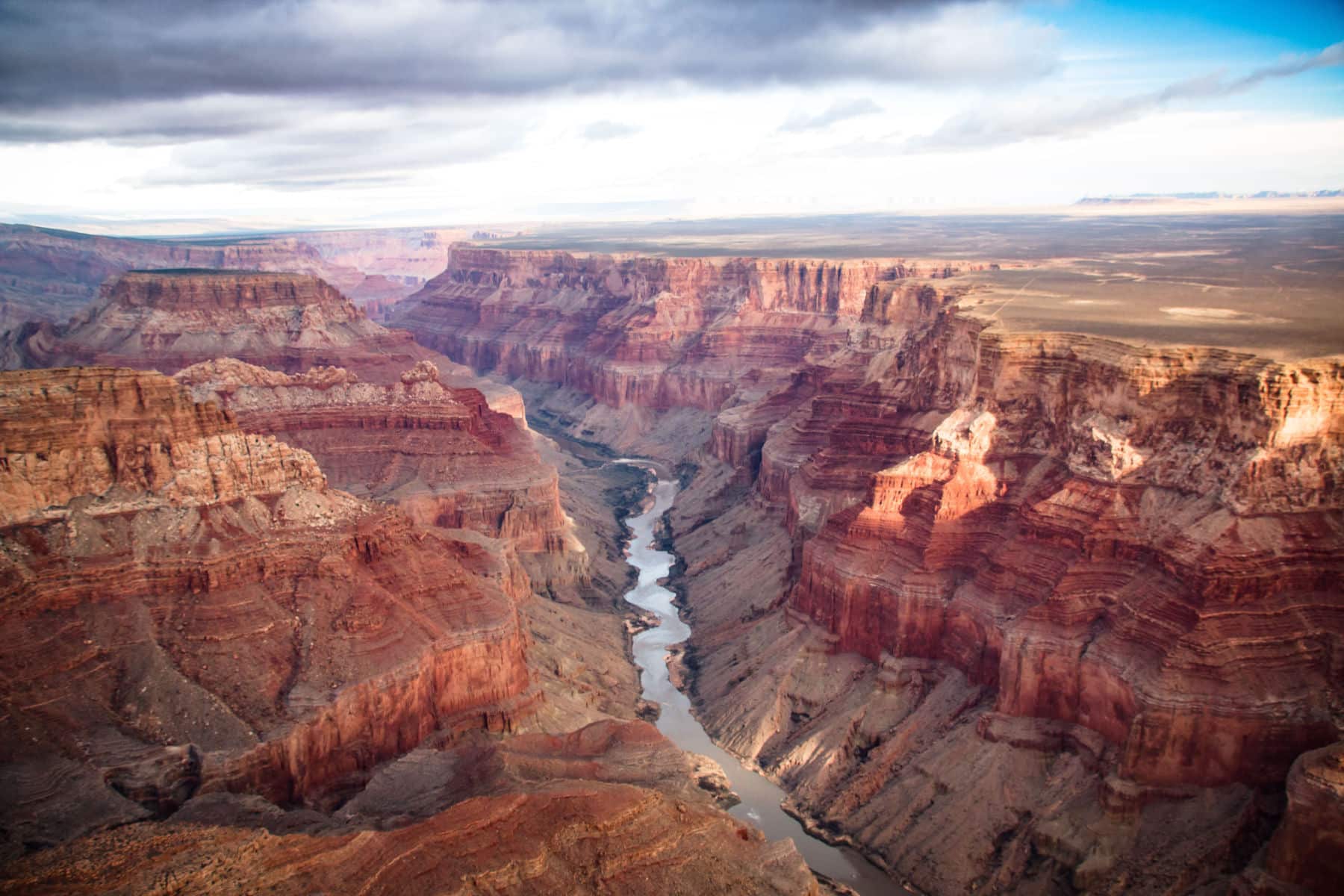
Things To Do
There are many things to do and see at Grand Canyon National Park. Here are some popular activities and attractions:
- Scenic viewpoints: The park has several stunning viewpoints along the South Rim, including Mather Point, Yavapai Point, and Desert View, which offer breathtaking views of the canyon and its colorful layers.
- Hiking: Grand Canyon National Park has a variety of hiking trails for all skill levels, from short walks to strenuous backcountry hikes. Popular trails include the Bright Angel Trail, South Kaibab Trail, and Rim Trail.
- Rafting: The Colorado River runs through the Grand Canyon, providing opportunities for rafting and kayaking trips. These trips range from half-day to multi-day adventures, and offer a unique perspective of the canyon.
- Mule rides: The park offers mule rides down into the canyon, with options for half-day or overnight trips. This is a great way to experience the canyon from a different perspective and see some of the park’s more remote areas.
- Ranger-led programs: The park offers a variety of ranger-led programs, including guided hikes, talks, and demonstrations, which are a great way to learn more about the park’s natural and cultural history.
- Grand Canyon Village: The park’s main visitor center and hub, Grand Canyon Village, offers a variety of restaurants, shops, and museums, as well as historic buildings like the El Tovar Hotel and the Hopi House.
- Photography: The Grand Canyon is a photographer’s paradise, with endless opportunities for capturing stunning landscapes, wildlife, and sunrises and sunsets.
- Stargazing: The park’s remote location and high elevation make it an ideal place for stargazing. The park offers night sky programs and events throughout the year.
Map Of Arizona Landmarks
List Of Arizona Landmarks
- Grand Canyon National Park
- Monument Valley
- Saguaro National Park
- Casa Grande Ruins National Monument
- Coronado National Memorial
- Petrified Forest National Park
- Fort Bowie National Historic Site
- Navajo National Monument
- Glen Canyon National Recreation Area
- Old Spanish National Historic Trail
- The Phoenix Art Museum
- Sonoran Desert
- Tonto National Monument
- Tumacácori National Historical Park
- Hubbell Trading Post National Historic Site Monument
- Wupatki National Monument
- Tombstone Historical District
- Pioneer Living History Museum
- San Xavier del Bac Mission
- Scottsdale’s Museum of the West
- Copper Queen Mine
- Old Town Scottsdale
- London Bridge
- Yuma Territorial Prison State Historic Park
- Arizona Museum of Natural History
Why Trust Us About Arizona Landmarks?
We’re Jim Pattiz and Will Pattiz, collectively known as the Pattiz Brothers (and sometimes as the “Parks Brothers”).
You should probably know that we don’t just make this stuff up out of thin air. We absolutely LOVE America’s public lands and have spent our entire adult lives bringing these places to life through our amazing short films.
We’ve worked with the National Park Service, the Department of Interior, USDA, U.S. Forest Service, and more for years creating films on important places and issues. Our work has been featured in leading publications all over the world and even some people outside of our immediate family call us experts on the national parks.
And, in 2018, our father – having spent a lifetime teaching history – joined us so that he could help us to tell the incredible stories behind these amazing places.
Meet The Parks Brothers
We Hope You’ll Join Our Journey

Our goal here at More Than Just Parks is to share the beauty of America’s national parks and public lands through stunning short films in an effort to get Americans and the world to see the true value in land conservation.
We hope you’ll follow our journey through the parks and help us to keep them the incredible places that they are. If you’re interested in joining the adventure then sign up below!
Helpful Related Articles
Grand Canyon Viewpoints: 20 Best Views of the Grand Canyon (National Park)
Grand Canyon South Rim Things to Do: 15 Amazing Things to Do at the Grand Canyon South Rim
Things to Do at the Grand Canyon: 20 Best Things to Do at Grand Canyon National Park
Closest Cities to the Grand Canyon: 10 Closest Cities Near the Grand Canyon
Grand Canyon Facts: 15 Fascinating Grand Canyon National Park Facts
Grand Canyon in Winter: Visiting the Grand Canyon in December (Winter Guide)
Desert View Watchtower: Explore the Historic Desert View Watchtower
Arizona National Parks: 24 Epic Arizona National Parks to Visit (Photos + Guide)
Things to Do Saguaro NP: 15 Best Things to Do Saguaro National Park
Things to Do Zion NP: 18 Epic Things to Do at Zion National Park
Best Hikes Saguaro NP: 10 Best Saguaro National Park Hikes
National Parks Near Tucson: 10 Best National Parks Near Tucson
National Parks Near Phoenix: 10 Best National Parks Near Phoenix
Living in Phoenix: Pros & Cons of Living in Phoenix
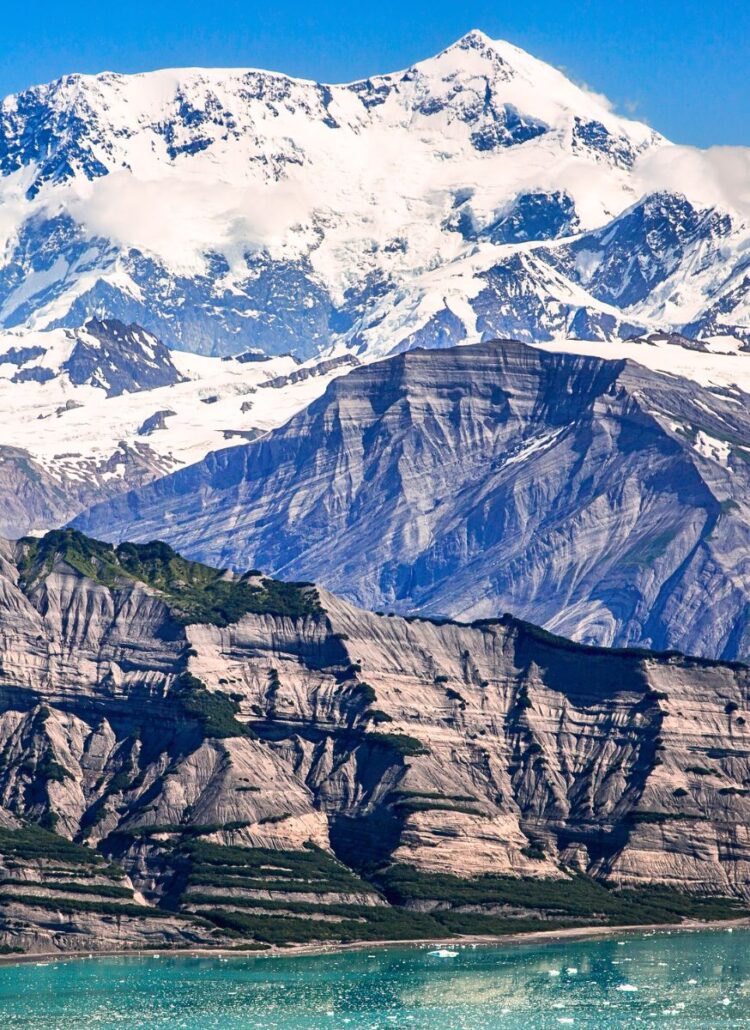
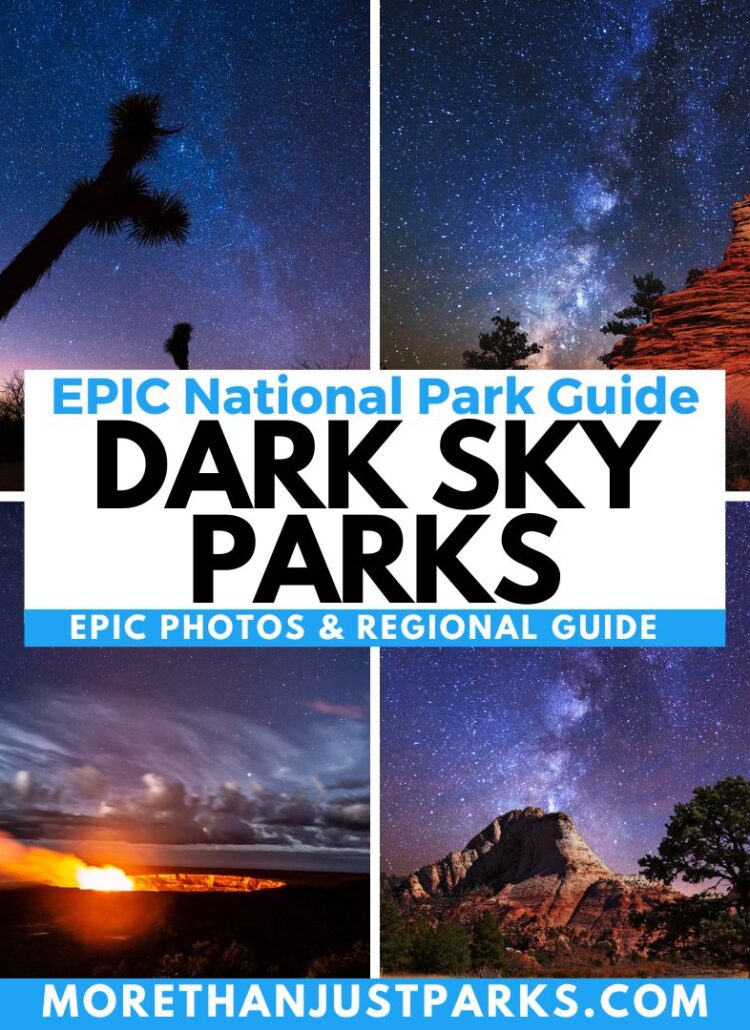
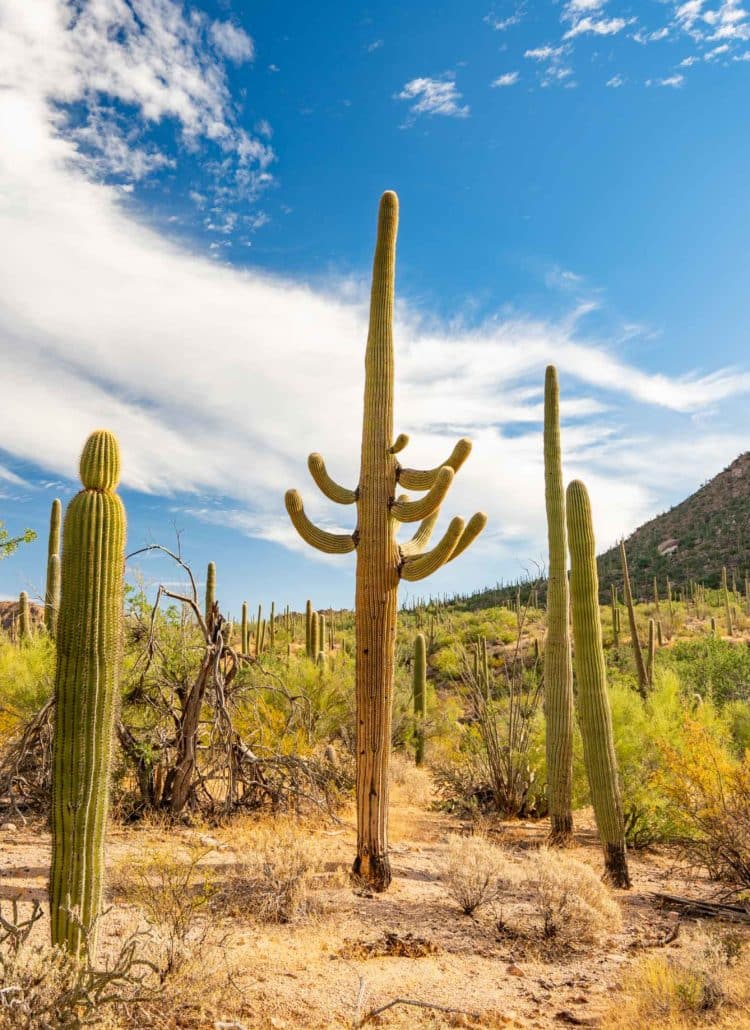
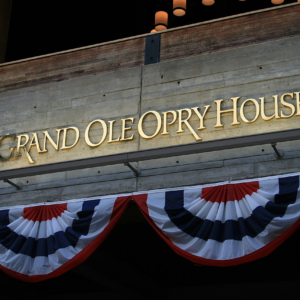

Leave a Reply